A short Scandinavian hop on Europe’s rarest turboprop
As I settled into university life in Brighton, around an hour south of London on the UK’s south coast, I began planning a few trips around the continent to take full advantage of my five-month exchange. I had long wanted to visit Scandinavia, and after establishing that Sweden’s Amapola Flyg was now the only pax Fokker 50 operator outside of Africa, Latin America, and Iran, I knew I had to take the opportunity.
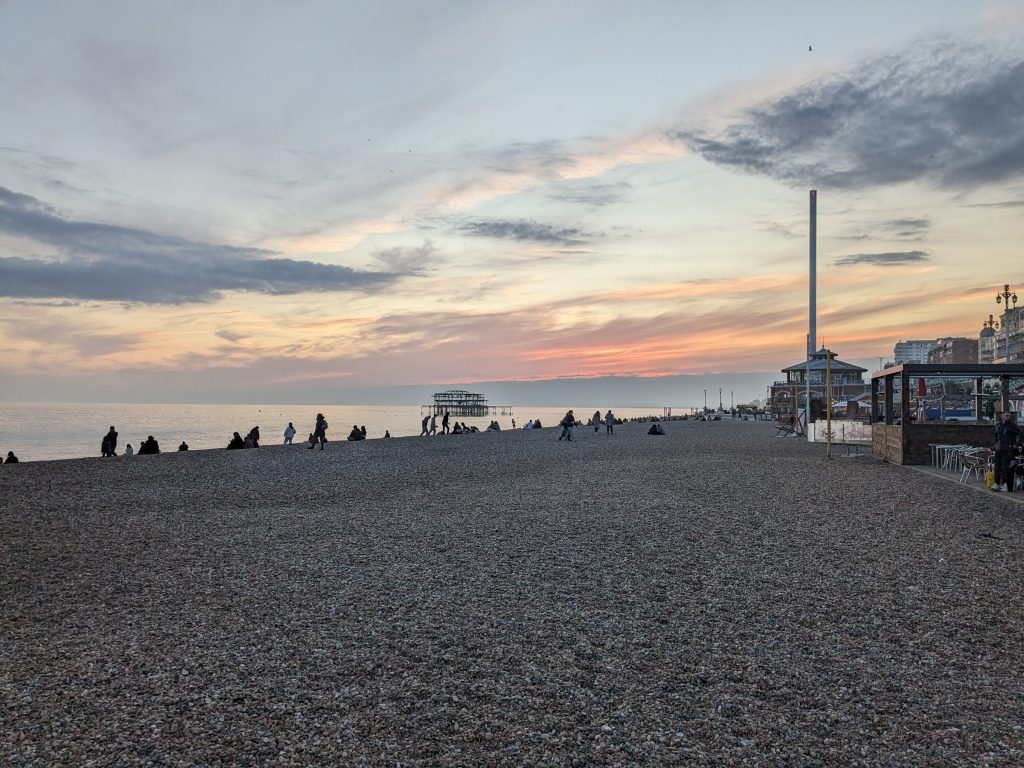
Following a bit of research, I settled on flying from the airline’s Stockholm Arlanda hub to Mariehamn, on the Swedish-speaking Finnish autonomous archipelago of Åland (or Ahvenanmaa in Finnish). Now 20 years old, Amapola Flyg have exclusively flown the Fokker 50 since their inception, and are currently the type’s largest operator, with 14 frames on their books, according to planespotters.net. Although their five cargo-configured F50s still operate under the Amapola Flyg brand, passenger flights were shifted to a separate brand, PopulAir, in August 2023, with aircraft repainted to match.
| Flight Details | |
|---|---|
| Airline | British Airways |
| Aircraft Type | Airbus A319-100 |
| Registration | G-DBCD |
| Route | London Heathrow to Stockholm Arlanda |
| Flight Number | BA776 |
| Date | 26/03/2024 |
My trip started on an overcast Monday morning with a two-and-a-half-hour National Express coach ride from Brighton to London Heathrow, where I checked into my room at the Terminal 4 Premier Inn. Despite the chilly weather, I then headed out for a few hours of planespotting from the Terminal 5 carpark. The busyness of Heathrow can hardly be overstated, with an aircraft landing every minute or two. I spotted over a hundred different aircraft, though the highlight was undoubtedly a TAROM Airbus A318 arriving from Bucharest. As the sky began to dim, I headed back to Terminal 4 on the free Elizabeth line transfer and had an early night, in anticipation of my 4 am alarm the next morning.
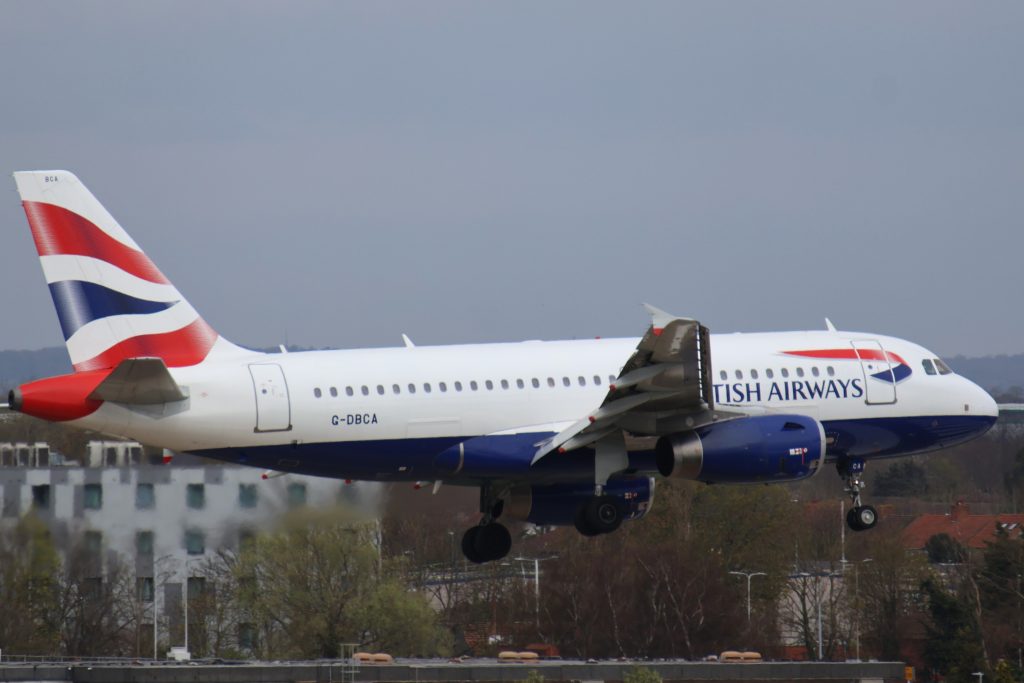
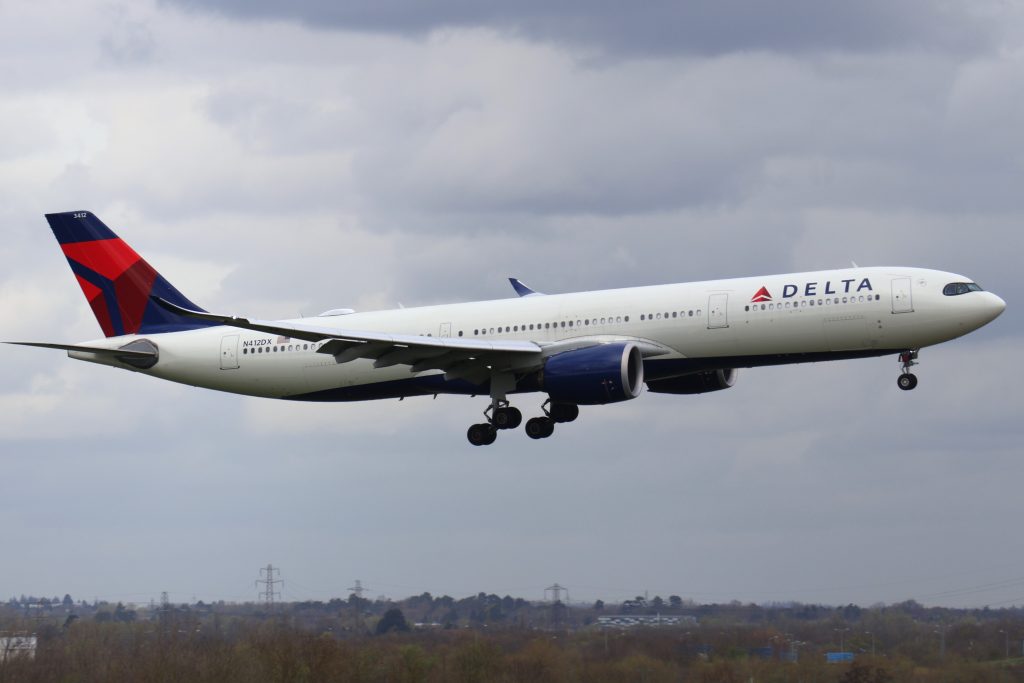
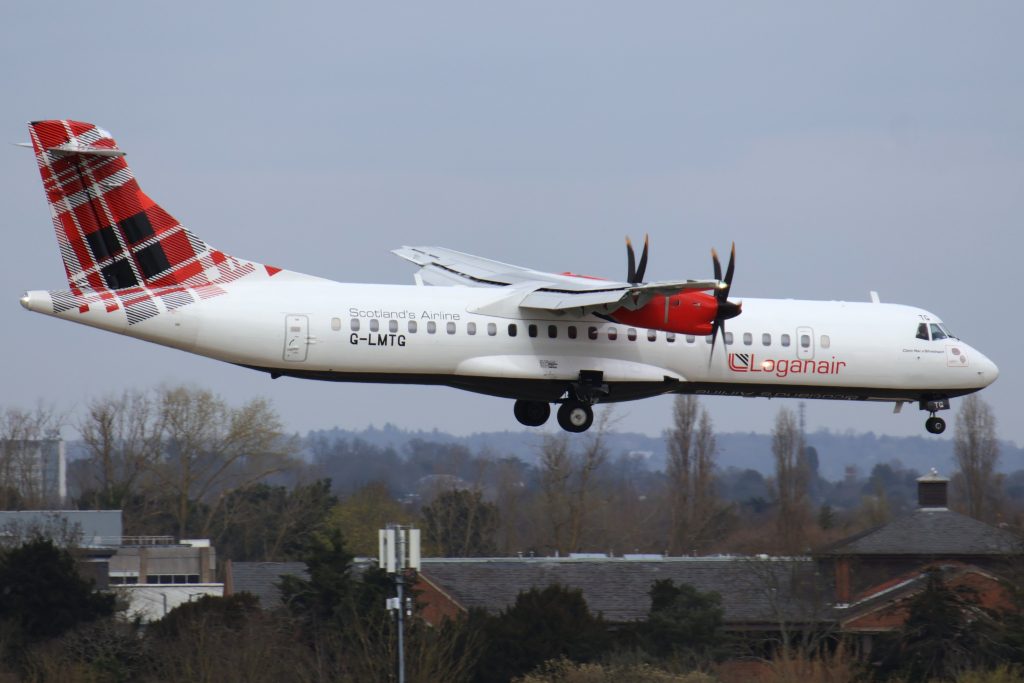
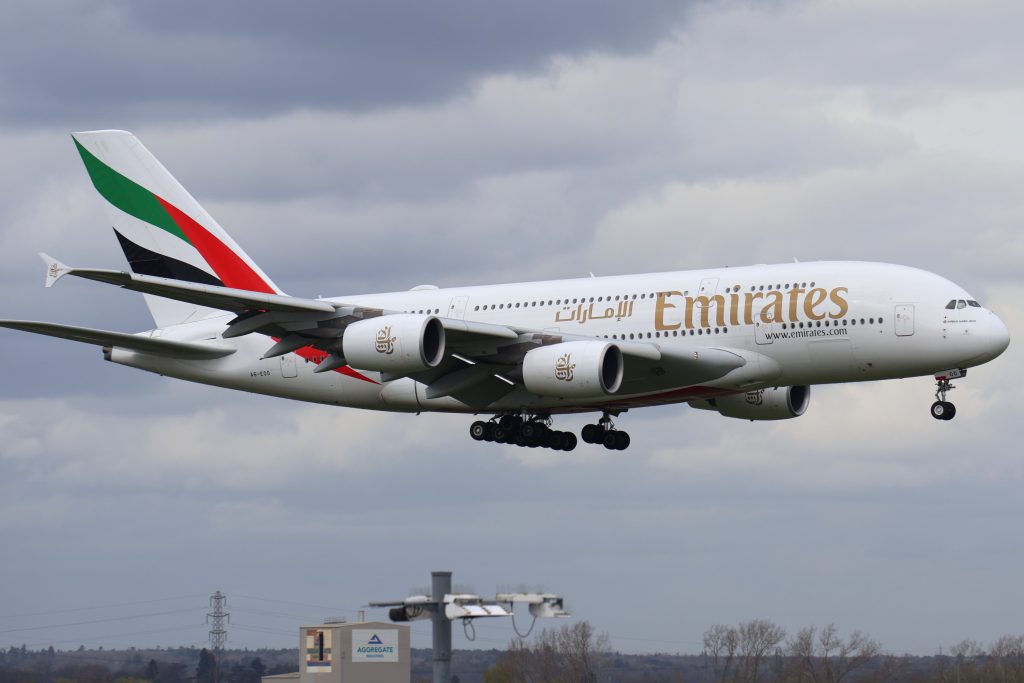
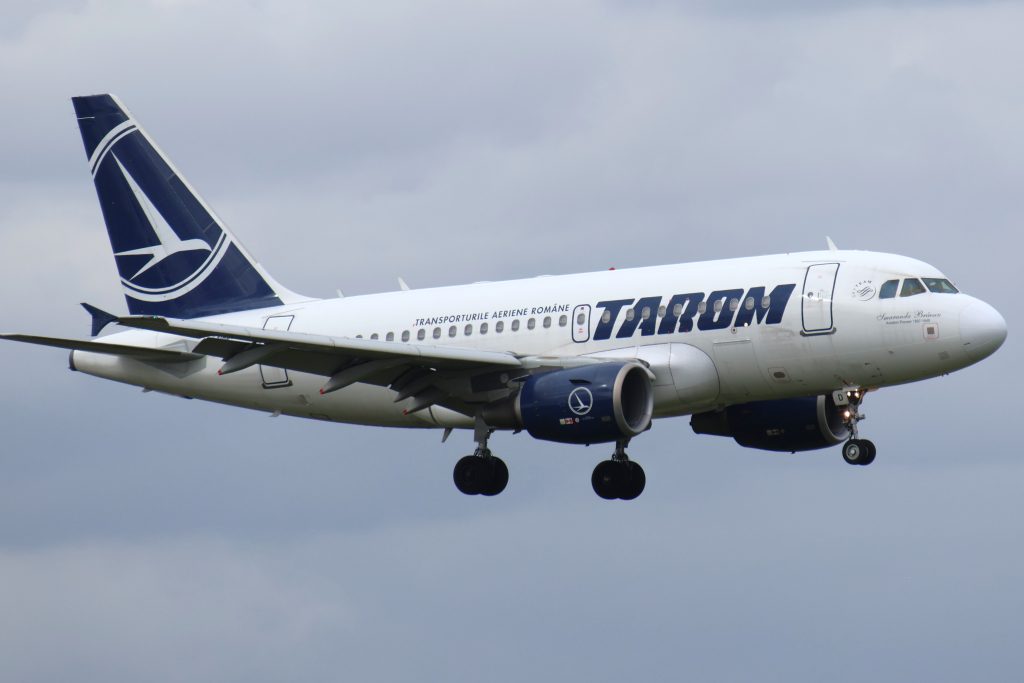
Far too soon I was up again, and after checking out, I hopped on the bus to British Airways’ massive Terminal 5 complex. Check-in was thankfully hassle-free, despite the packed terminal, and having made my way through security, I grabbed some breakfast from Pret, and headed to my gate at the southern end of the terminal. With less than 15 people at the gate, boarding was called verbally, and after some issues with the lack of signature in my passport, I boarded the BA-branded bus.
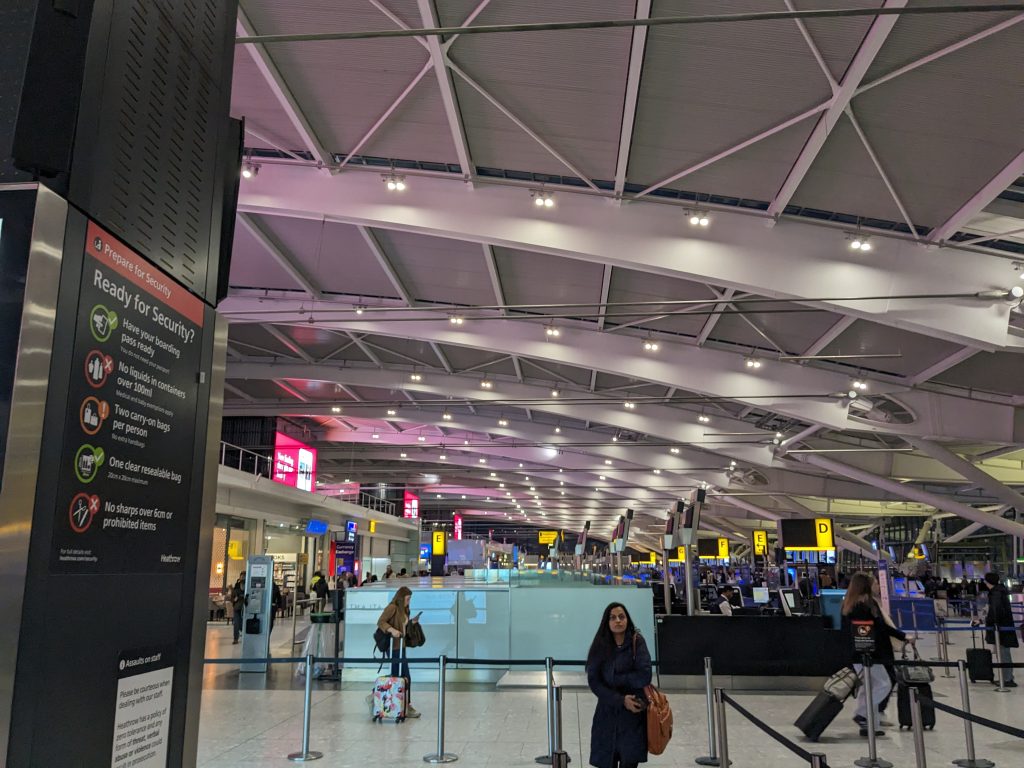
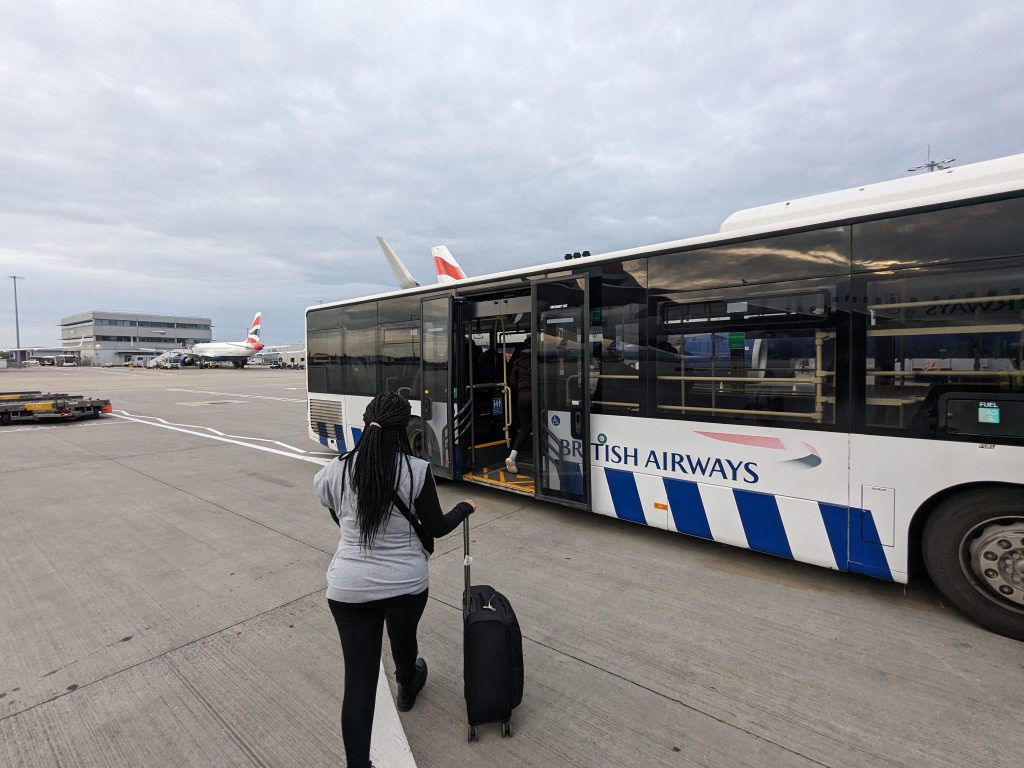
With a handful more passengers on board, the bus snaked its way around to the waiting aircraft, a 19-year-old Airbus A319-100, G-DBCD, previously operated by bmi British Midland. Unfortunately, the aircraft wasn’t ready, so we spent about ten minutes waiting on the bus before being allowed to board. Upon boarding, it was immediately evident the aircraft had been refurbished at some point, with new seats, and what appeared to be new overhead bin doors, allowing larger bags to be stowed. Eventually, a second busload of passengers arrived, a while after I had boarded, although I counted a total of 40 passengers, a load factor of less than 30%.
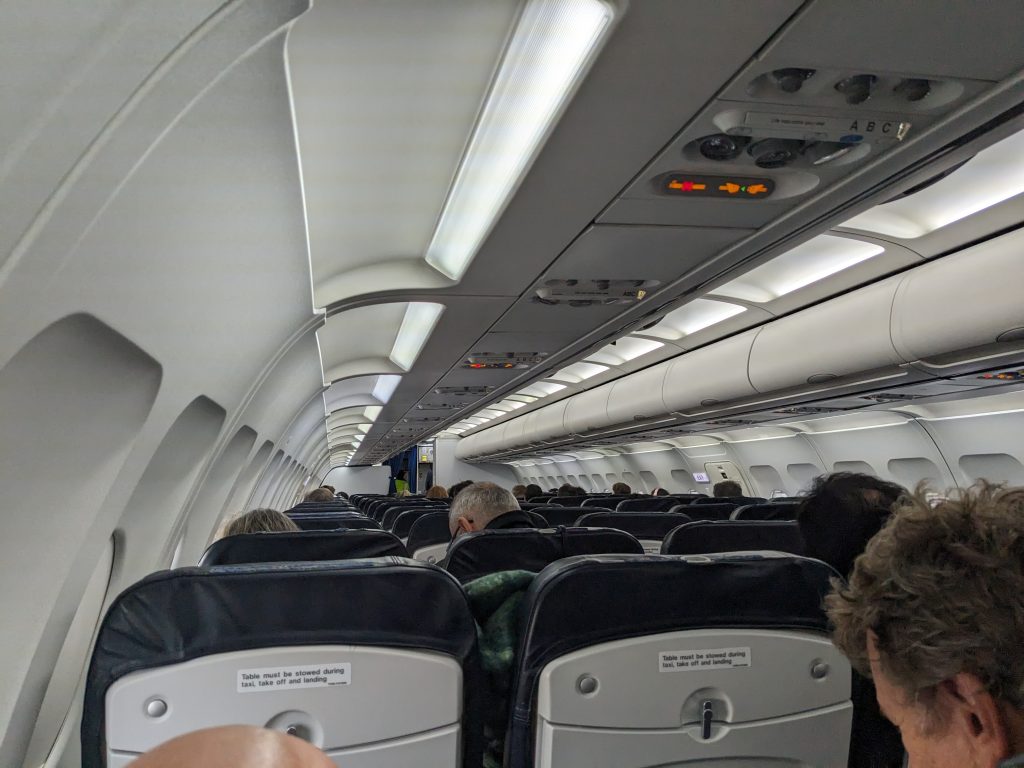
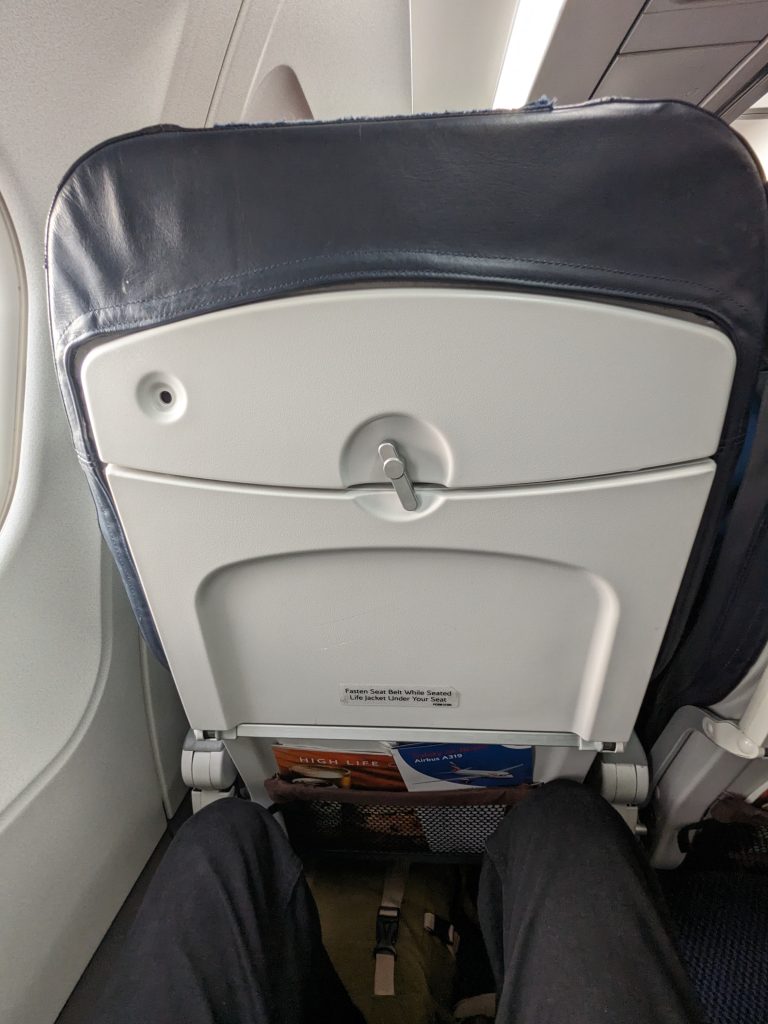

We pushed back a little delayed, but had a very short taxi to the active runway for take-off, and were soon climbing out and heading east over north London. The snack service began shortly after, with many passengers opting to purchase items off the buy-on-board menu, however, I was content with the complimentary oat bite and water.

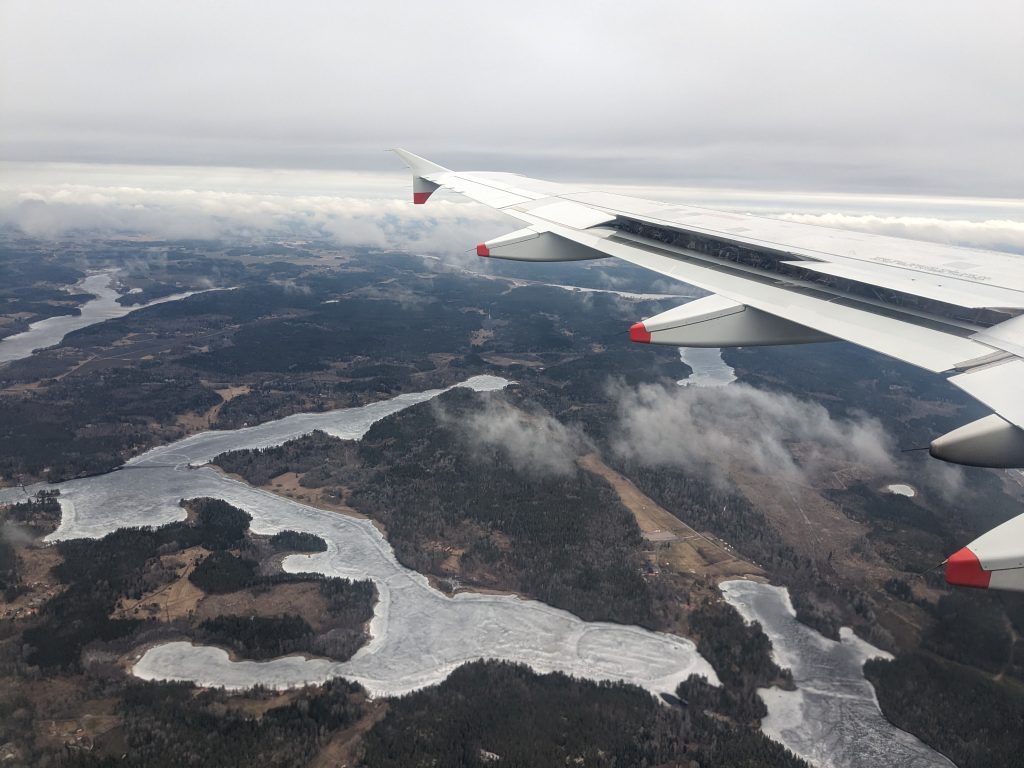
The remainder of the flight was entirely unremarkable until we descended below the clouds approaching Stockholm, where the expanses of pine forests and ice-coated lakes felt very, very foreign to me! Having landed on 19R, we then taxied around to Arlanda’s Terminal 2, taking us past a tantalising glimpse of the main purpose of my trip, in the shape of PopulAir Fokker 50 SE-MFP, parked at a remote bay. Having been seated in row 19, I had the rather rare opportunity (by European standards) to disembark via the rear door and walk round to the jetbridge stairs, offering excellent views of the aircraft.

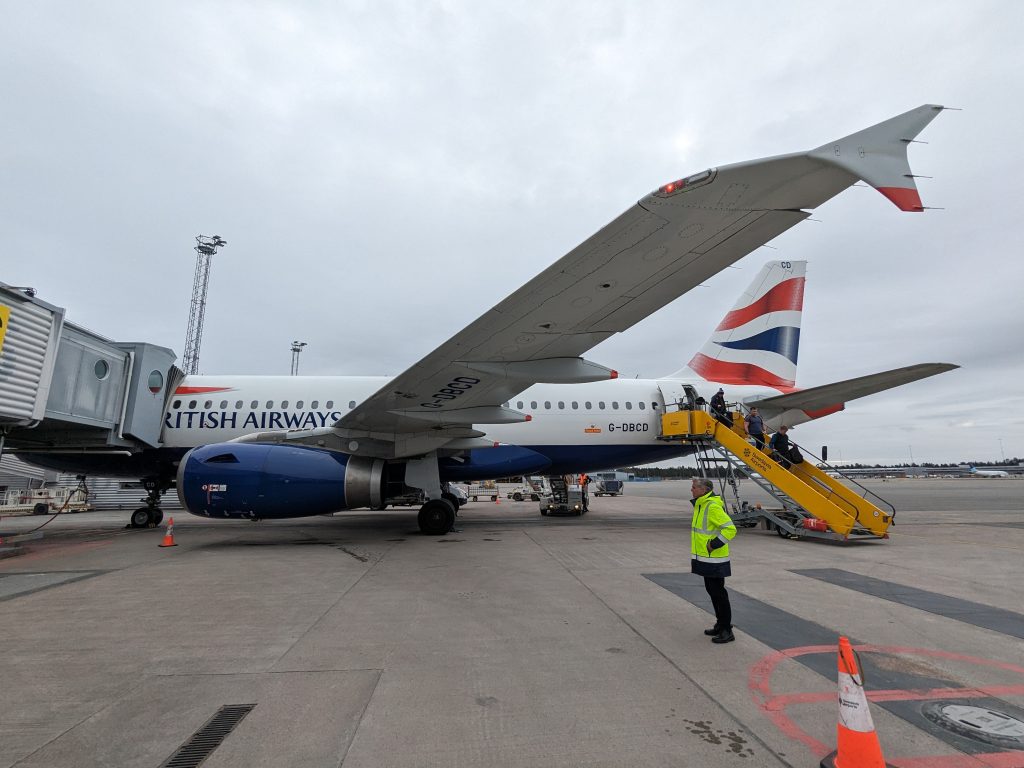
Unfortunately for me (and many of the other passengers), Arlanda’s Terminal 2 only had two agents processing non-EU passport holders at the time, so I ended up spending a whole 40 minutes in line. With my passport stamped, I followed the yellow arrows to the Arlanda Express station for the train into the city centre, whose shockingly pricey tickets served as a reminder of just how expensive visiting Scandinavia as a tourist is (320SEK or around $45 for a return youth ticket). Thankfully the train was comfortable and an efficient way to get to the city centre. After 18 minutes of being a little overexcited at the sight of so much snowfall, the train pulled into Stockholm Central Station, and I made my way to check in to my hotel.
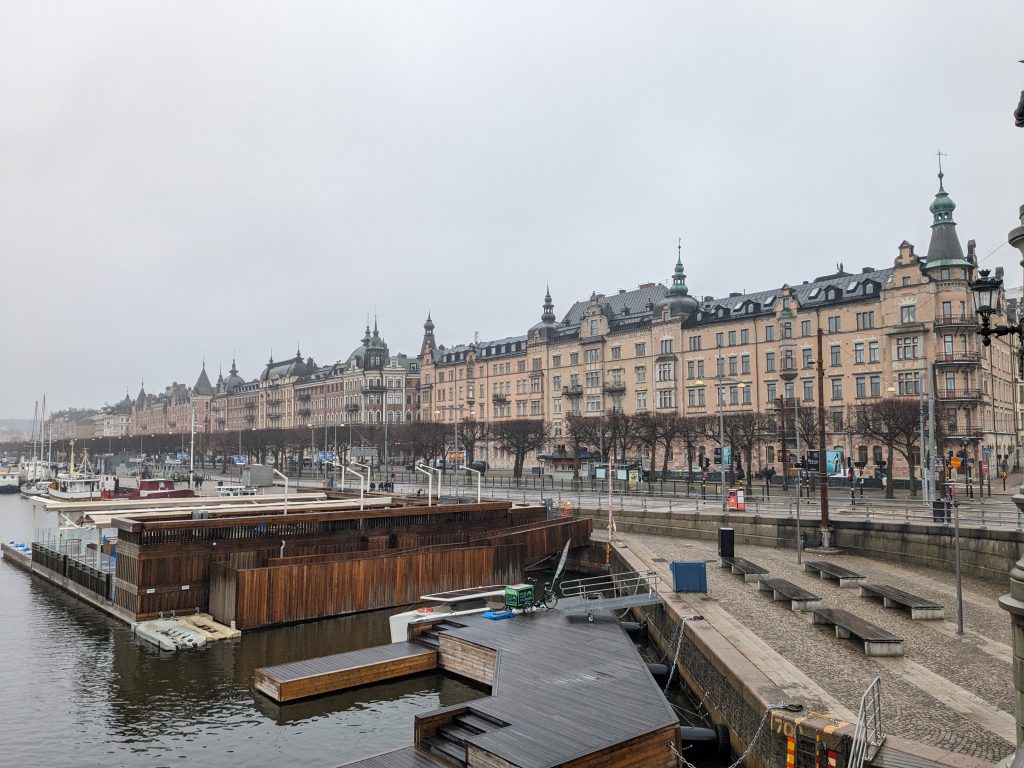
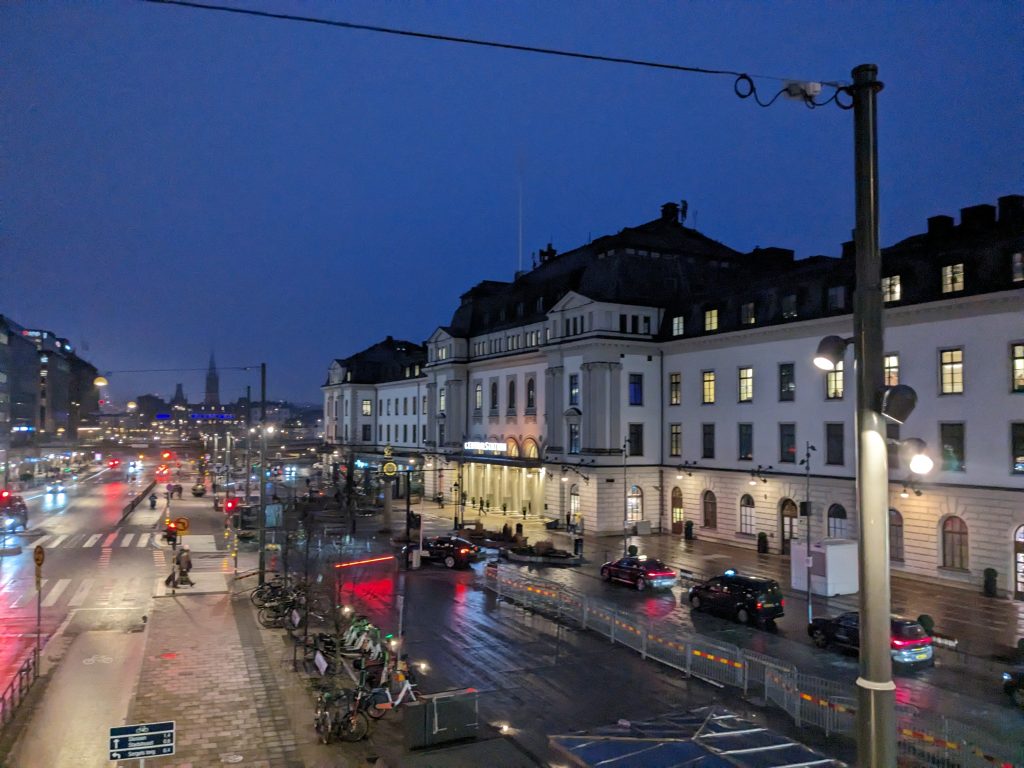
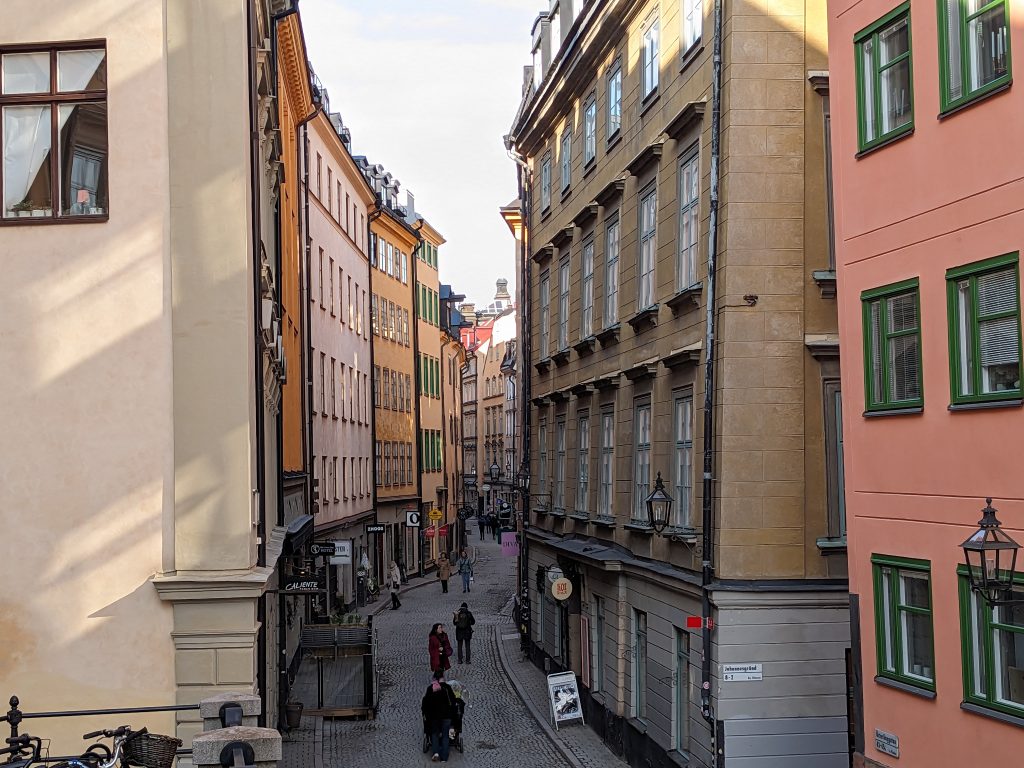
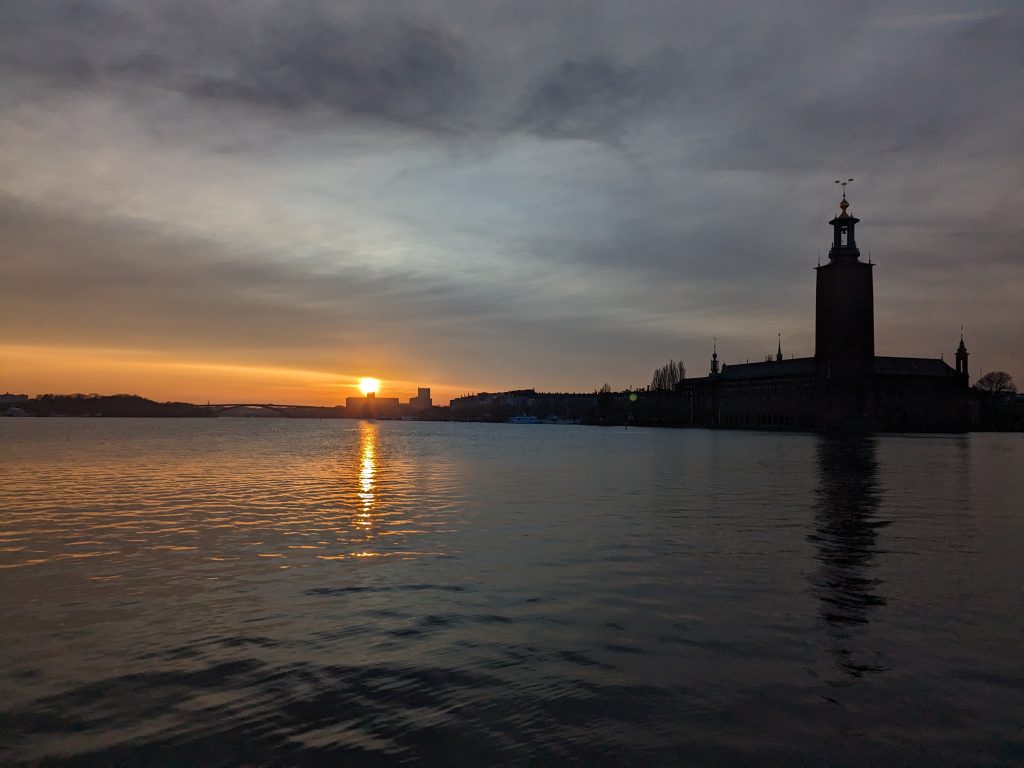
With just two nights in Stockholm, I made the most of my time there, checking out a few museums, doing some obligatory sightseeing, and making the most of the city’s excellent public transport (after a very unfriendly Storstockholms Lokaltrafik employee reluctantly sold me a SL green card).
| Flight Details | |
|---|---|
| Airline | PopulAir |
| Aircraft Type | Fokker 50 |
| Registration | SE-MFR |
| Route | Stockholm Arlanda to Mariehamn |
| Flight Number | HP281 |
| Date | 28/03/2024 |
With departure scheduled for 9:00, I had another early start, and was back on the Arlanda Express at 7 am, departing this time, from Arlanda’s much nicer Terminal 4. PopulAir’s check-in desks were surprisingly busy, with several flights departing mid-morning. With my unbranded boarding pass in hand, I headed around to security and through to the light and airy gate area. With another PopulAir flight departing from the gate 30 minutes prior to mine it was a little busy, although the terminal itself was remarkably quiet overall. Boarding began 30 minutes before departure, and with a grand total of five passengers, it was a particularly speedy affair once the bus arrived at our aircraft.
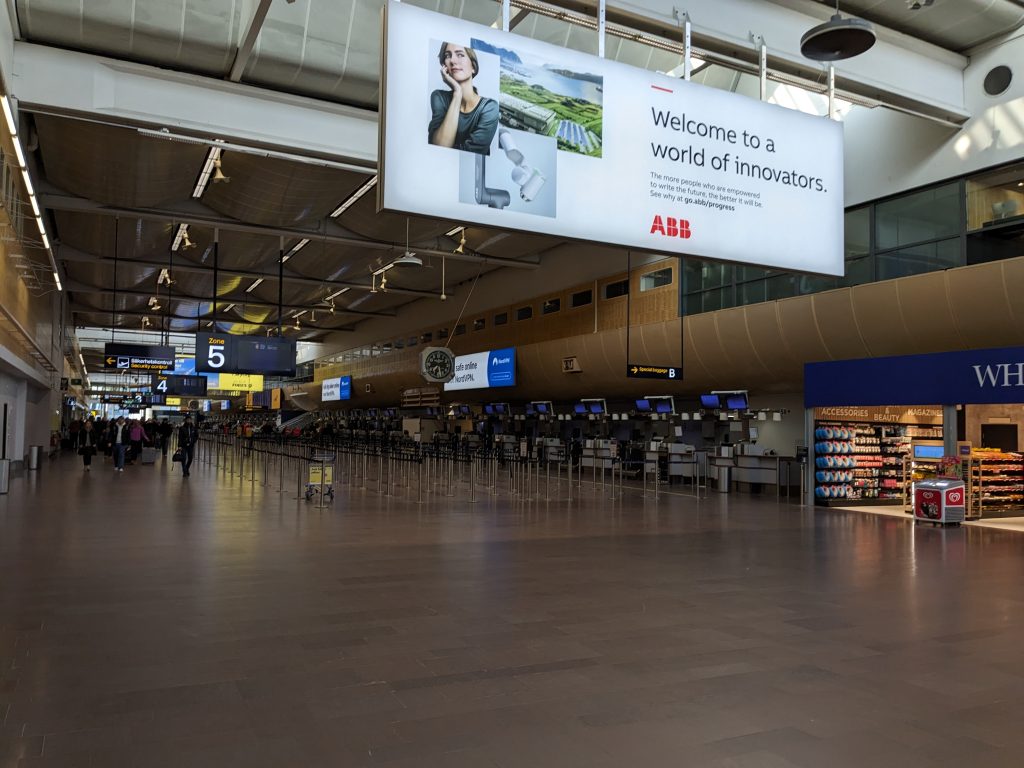

My aircraft for the short hop to the Ålandic capital was a 31-year-old Fokker 50 SE-MFR. Originally delivered to Austrian Airlines in September 1992, the aircraft made its way to Amapola Flyg in October 2018, and following a brief stint flying for Braathens, -MFR received PopulAir colours in August 2023.

I was directed to seat 8D by the stern flight attendant, as although PopulAir operates on a free seating policy, I was told sitting further forward would not be possible, to keep the aircraft balanced. While the engine cowling view was less than ideal, I was preoccupied with taking in the very vintage cabin, complete with ashtrays in the armrests. While the cabin was distinctly dated, it seemed fairly clean and well-maintained, and both my light and air vent in the overhead PSU functioned fine.
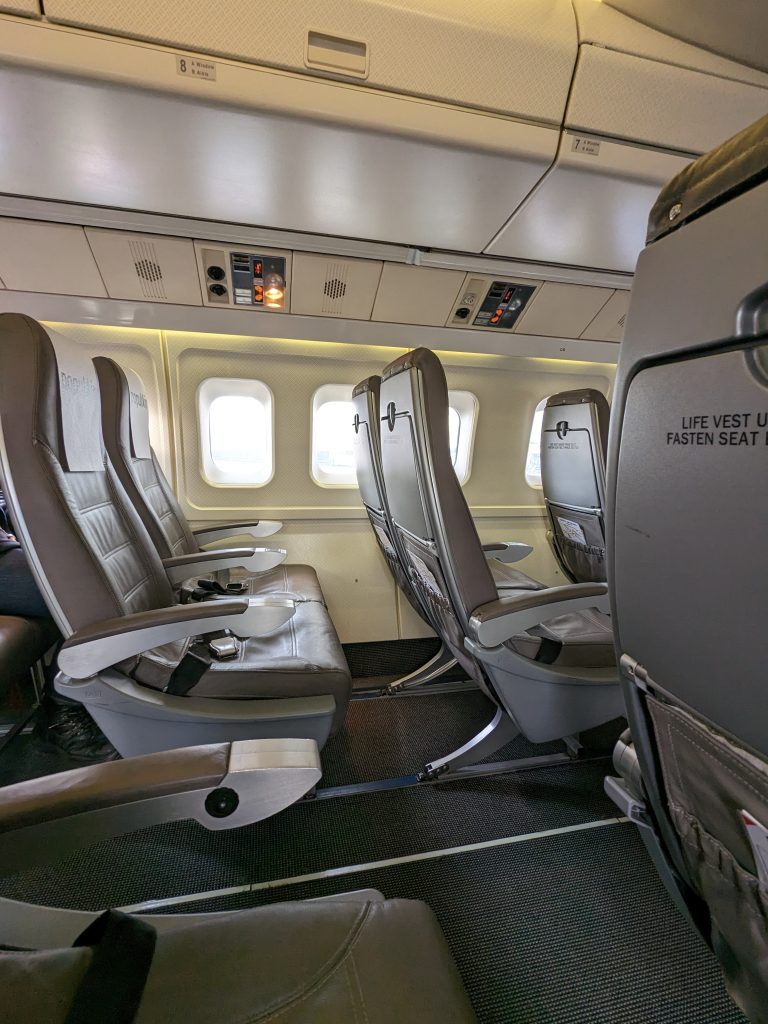

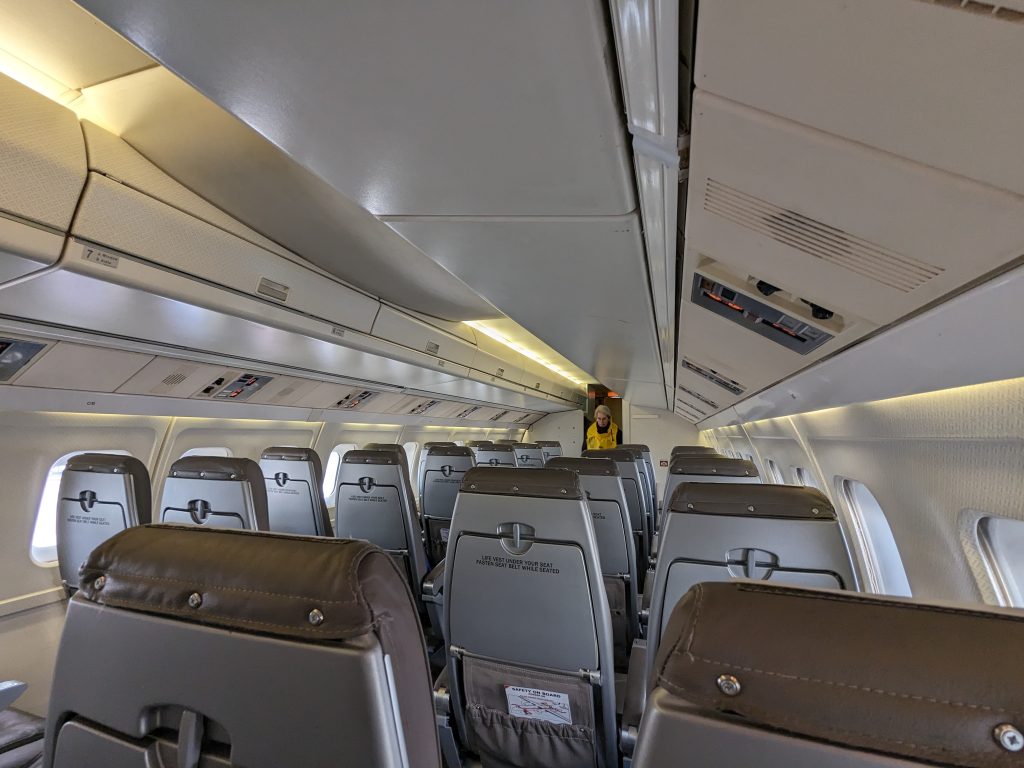
Before long, the engines roared to life, and we began a remarkably speedy taxi around the airport to runway 08. The FA, still clad in a knee-length winter coat and gripping the bulkhead as we careered around the taxiways, zoomed through the safety demo in Swedish.
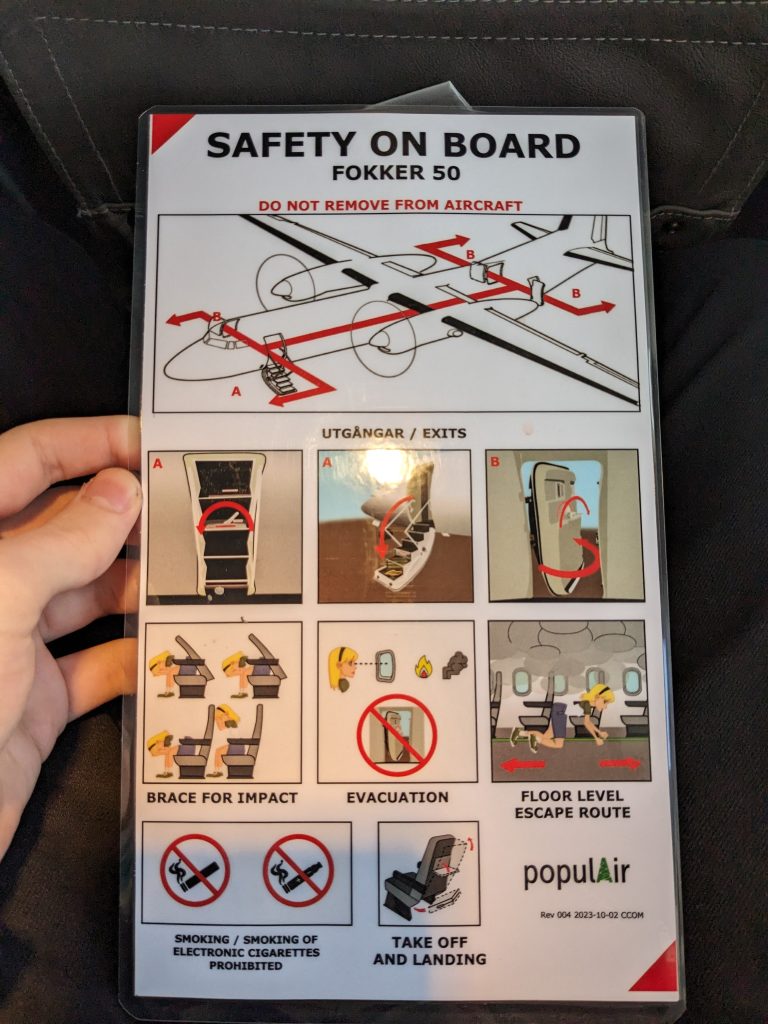
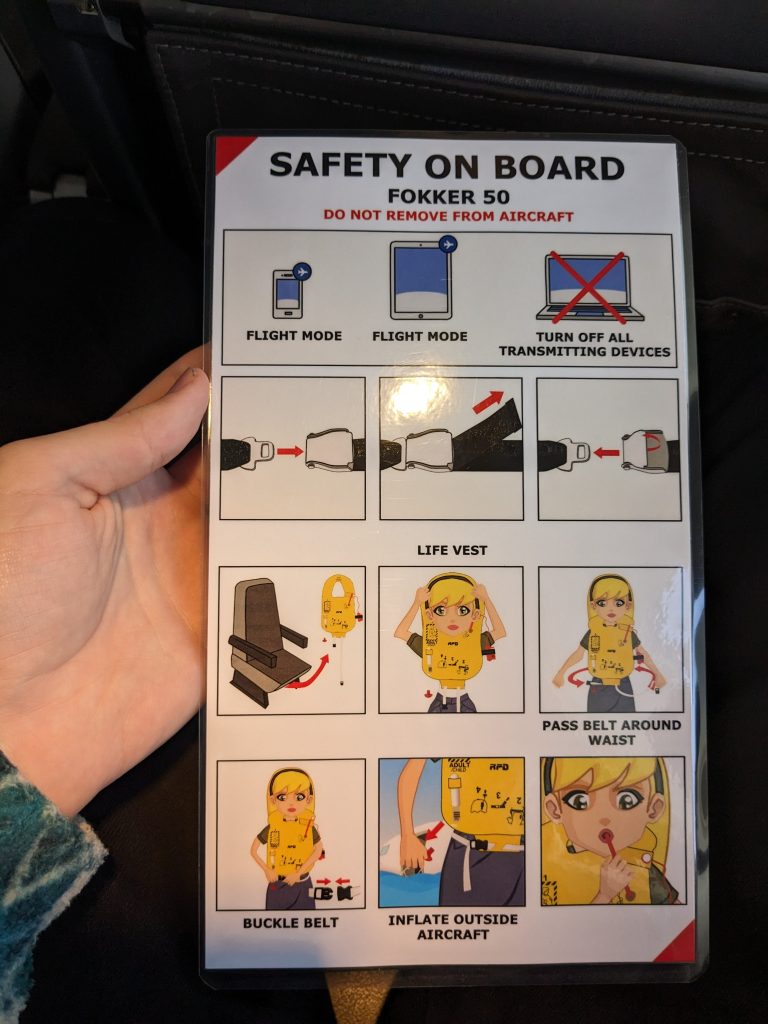
Just as we began climbing up away from the runway, I spotted Arlanda’s quartet of stored/preserved aircraft, Swedavia McDonnell Douglas MD-82 SE-RJP, Le Caravelle Club’s Sud Aviation SE 210 Caravelle III SE-DAI, Arctic Airlink Saab 340B SE-KXJ, and an unidentifiable Saab 2000. Topping off our cruise at 12,000ft, the FA briefly came through the cabin to hand out caramels, before the seatbelt was switched back on for our noticeably steep descent towards Mariehamn.
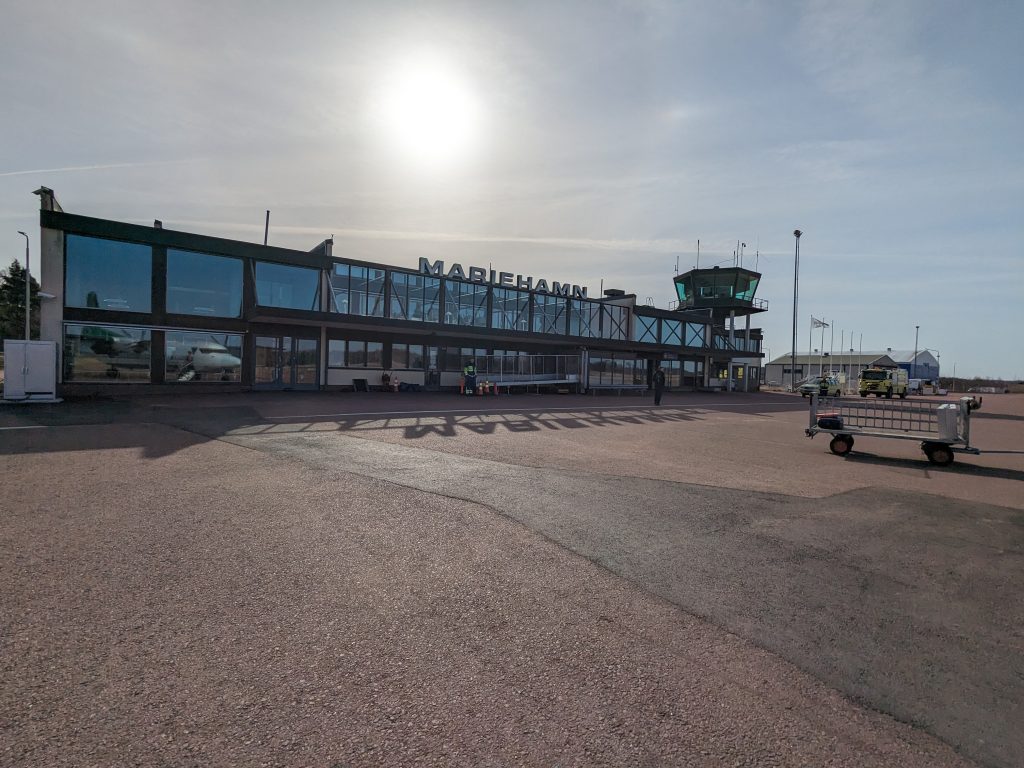

Following our rather firm touchdown on Mariehamn Airport’s runway 03, the pilot simply made a right turn off the runway, along a short taxiway, and parked in front of the small terminal. From take-off to touchdown, we spent a total of 18 minutes in the air, and covered a great circle distance of just 123km. Although I had originally planned to walk the three kilometres from the airport to my hotel in the town centre, I changed my mind after feeling the icy breeze and attempted to call a taxi from the warmth of the small arrivals area. The language barrier proved to be something of an issue, but I went to wait outside in the hope I had managed to communicate my location over the phone. Thankfully a friendly bloke in an electric Volvo turned up after 15 minutes, and although I did eventually get dropped off at my hotel (the boldly named Hotel Savoy), it did occur to me I probably should have attempted to learn more than just “tack”!
Mariehamn’s three main hotels, the Pommern, Savoy and Adlon are all owned by a single entity, Ålandhotels, with the Savoy unstaffed during the quieter winter season, so I made my way around to the more upmarket Hotel Pommern around the corner for check-in. Even during the low season, accommodation on Åland is pretty expensive by Scandinavian standards, so I was just staying for one night. I headed out to explore Mariehamn after dropping off my bag in my room. Thanks to its small size, the town is entirely walkable, so I made my way out past the Åland Landskapsregering (regional government) building, for a walk around Tullarns äng park before visiting the excellent Åland Maritime Museum.
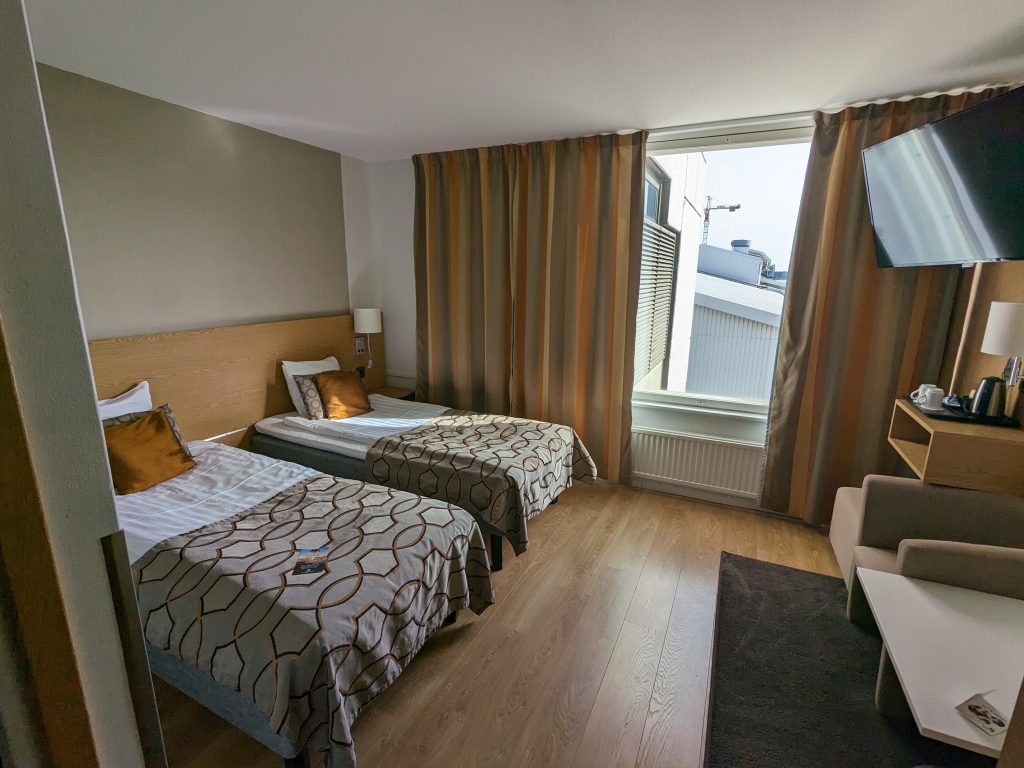
Mariehamn’s architecture was noticeably different to that of Stockholm, with a distinct Finnish influence on the hundreds of brightly painted wooden cottages. As Åland is an autonomous region of Finland, Mariehamn is home to several foreign consulates, most controversially the Russian Federation. Daily protests are conducted in the park outside the consulate in response to the war in Ukraine, while the municipality has also erected a Ukrainian flag on the street outside.
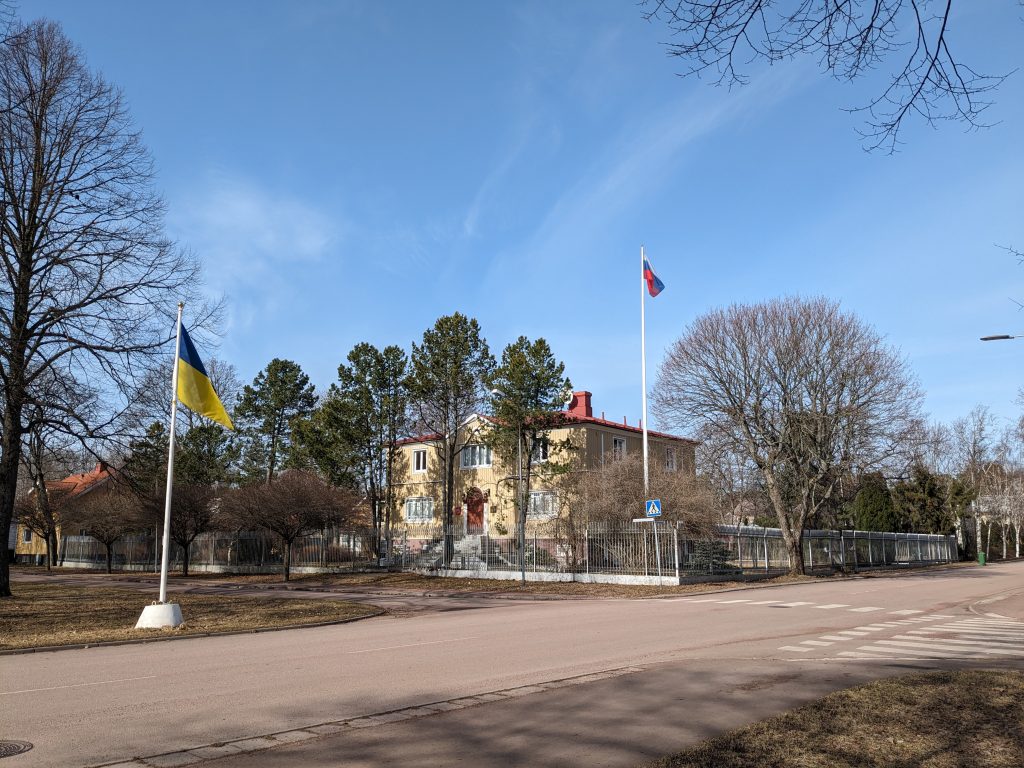
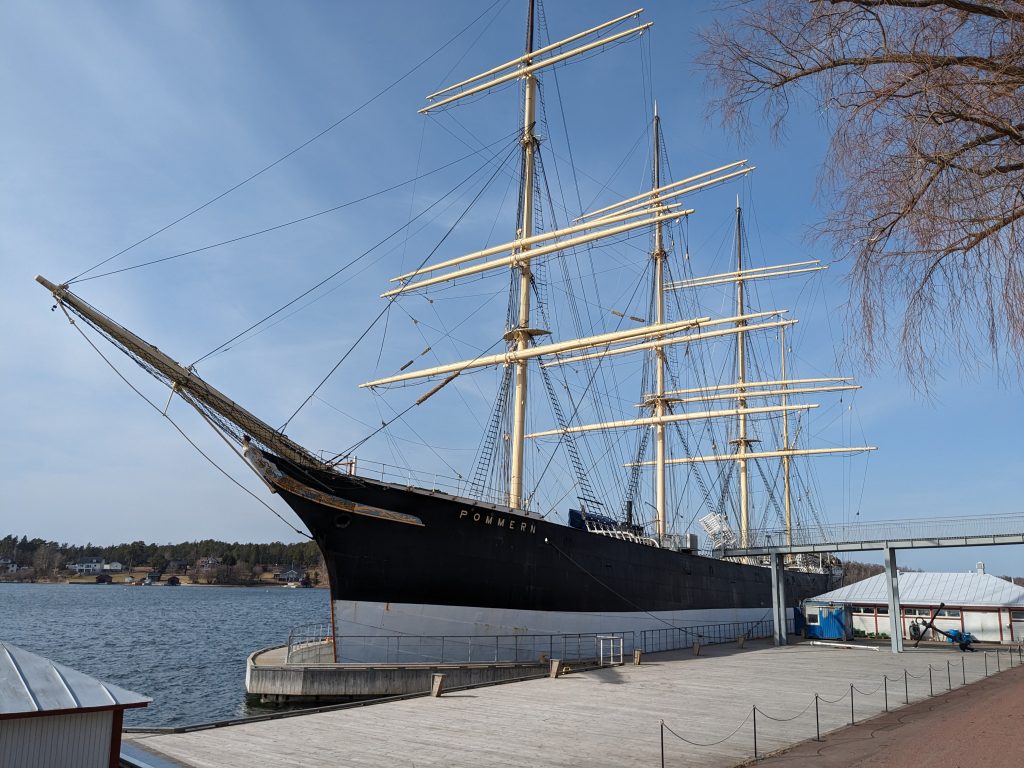
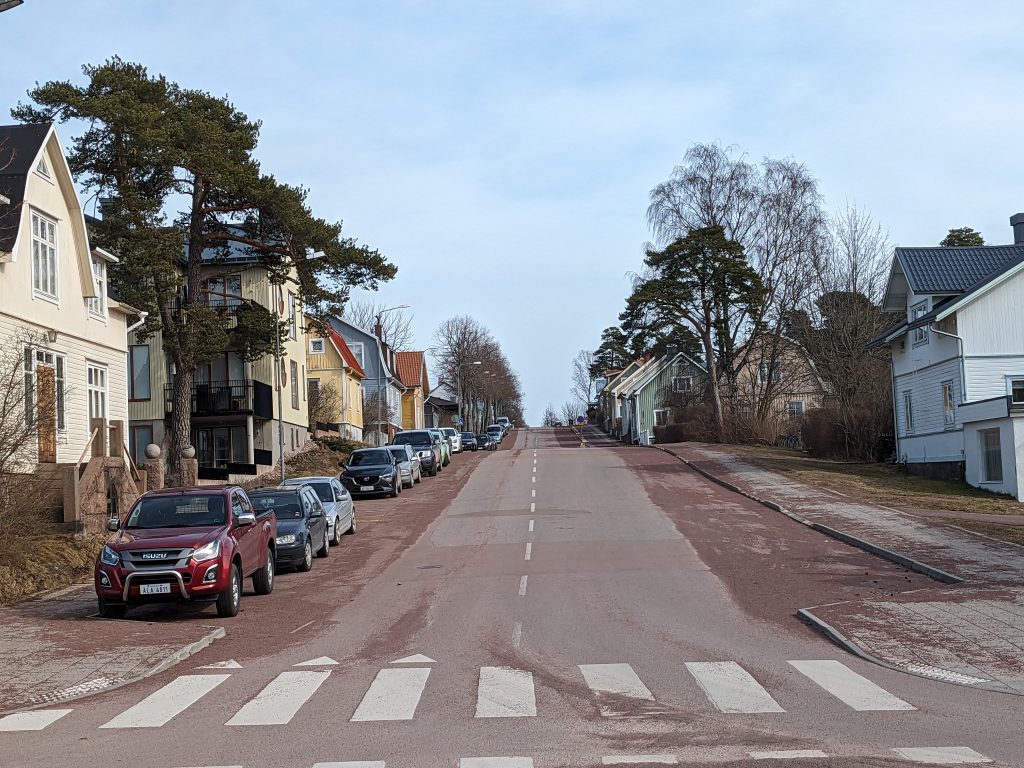
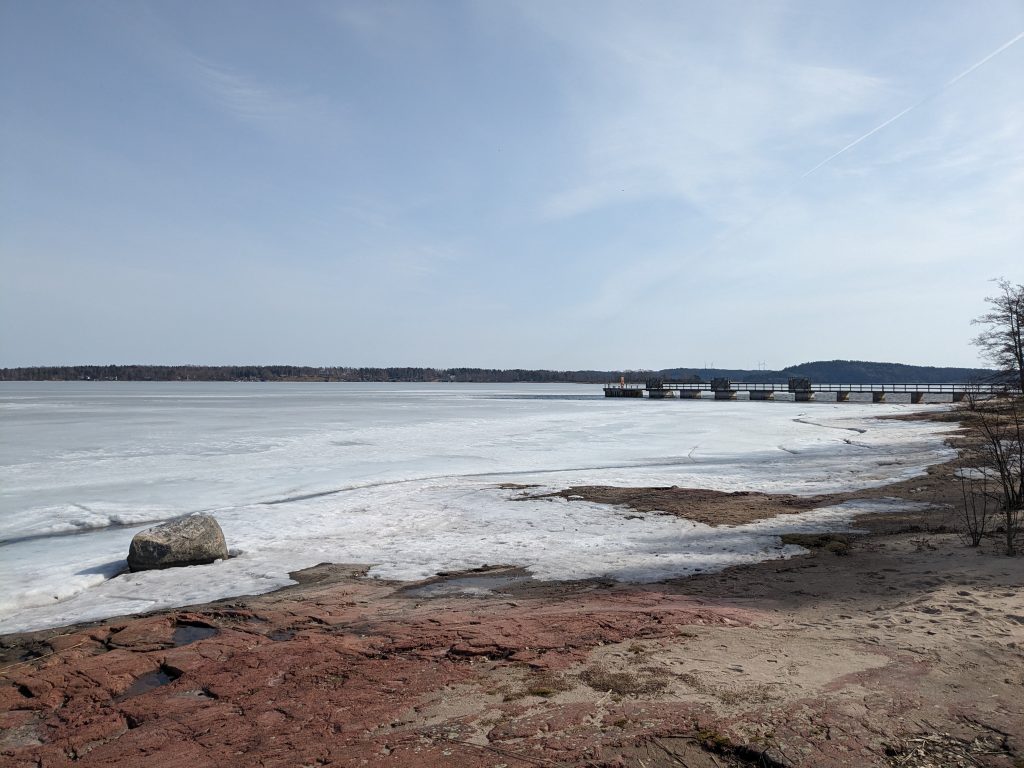
After my visit to the maritime museum, I walked down to Västerhamn (Western Harbour) to watch the afternoon Viking Line ferry arrivals from Stockholm and Turku. Having headed up Badhusparken to watch the sunset, I picked up some dinner and made my way back to my hotel for the night.
I woke up the next morning to misty rain, low cloud, and absolutely freezing wind, so after breakfast at the neighbouring Hotel Pommern, I headed out for a morning of sightseeing before my afternoon sailing to Turku. I had failed to realise until after booking, that my trip was right over the Easter weekend, and with 70% of Ålanders belonging to the Evangelical Lutheran Church of Finland, everywhere in Mariehamn, bar the supermarket and a few restaurants, was closed for Easter Friday.
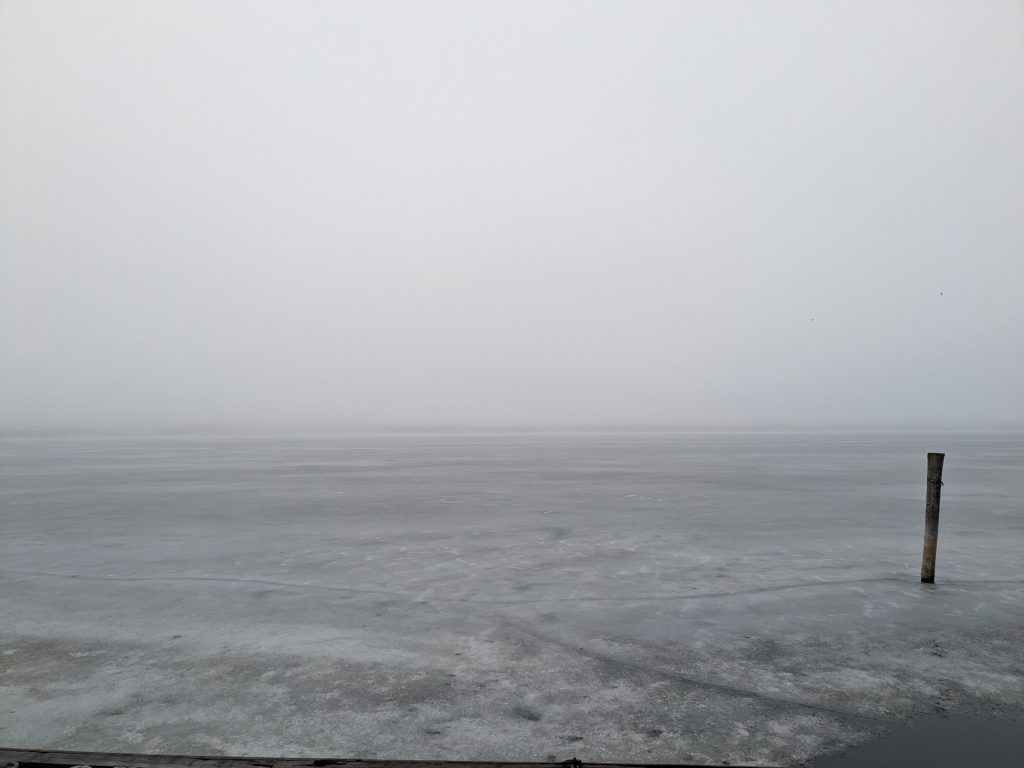
After a final walk around Mariehamn in the icy rain, I ended up heading to the relative warmth of the ferry terminal a little early. Check-in for foot passengers was via a kiosk similar to those used at airports, although the boarding pass was pretty much just a card stub with a barcode. The departure area was separated by turnstile gates, and I settled down onto one of the couches to wait for boarding.
| Sailing Details | |
|---|---|
| Company | Viking Line |
| Ship | M/S Viking Grace |
| Route | Mariehamn to Turku |
| Date | 29/03/2024 |
Baltic Sea cruiseferries, primarily sailing various routes between Helsinki, Turku, Tallinn, Mariehamn and Stockholm are something of a cultural phenomenon in Northern Europe. Most popular among Finns, Åland’s status outside the EU customs union allows ships calling at the islands to sell duty-free products, and ferry companies have slowly shifted away from being a conventional public transport offering, with various entertainment and dining options on board, even going as far to offer day returns on some routes. Conveniently for me, the intense competition on these routes has also led to remarkably low fares, and my ticket for the near 6-hour sailing to the Finnish port city of Turku cost only 16 euro.
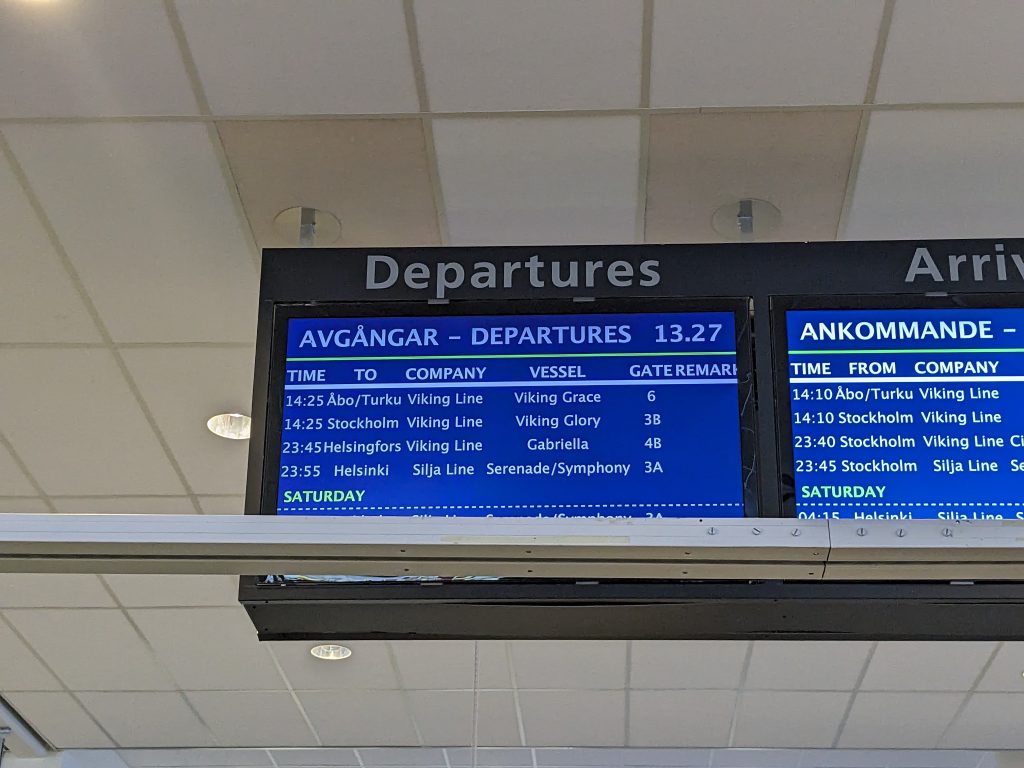
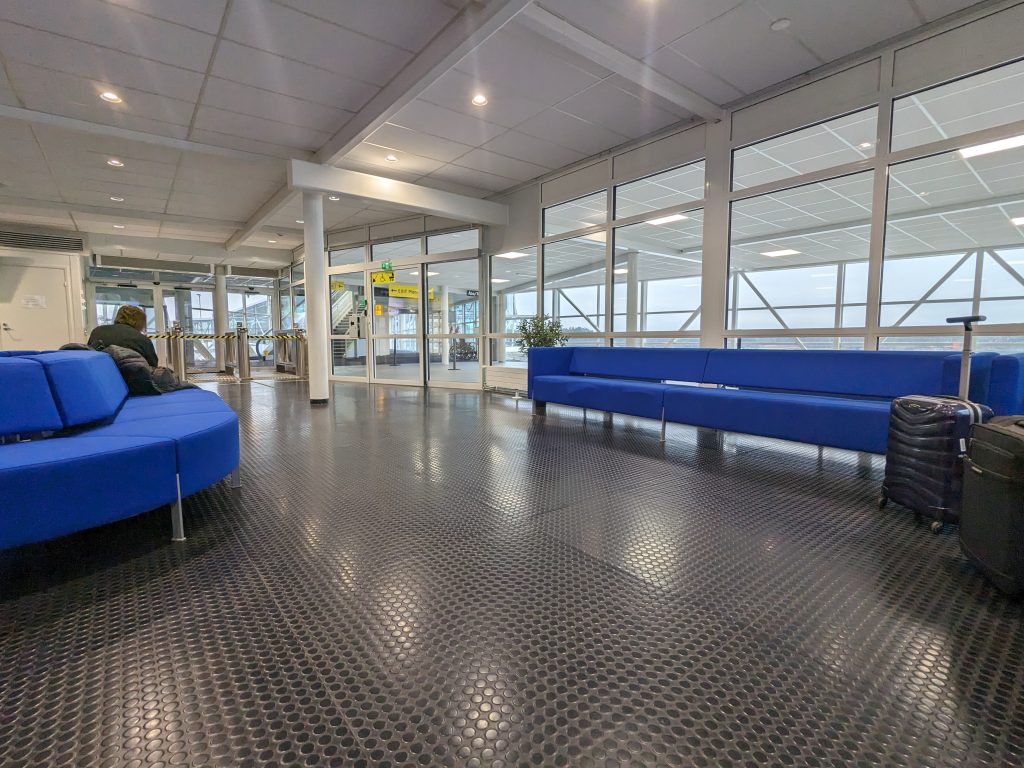
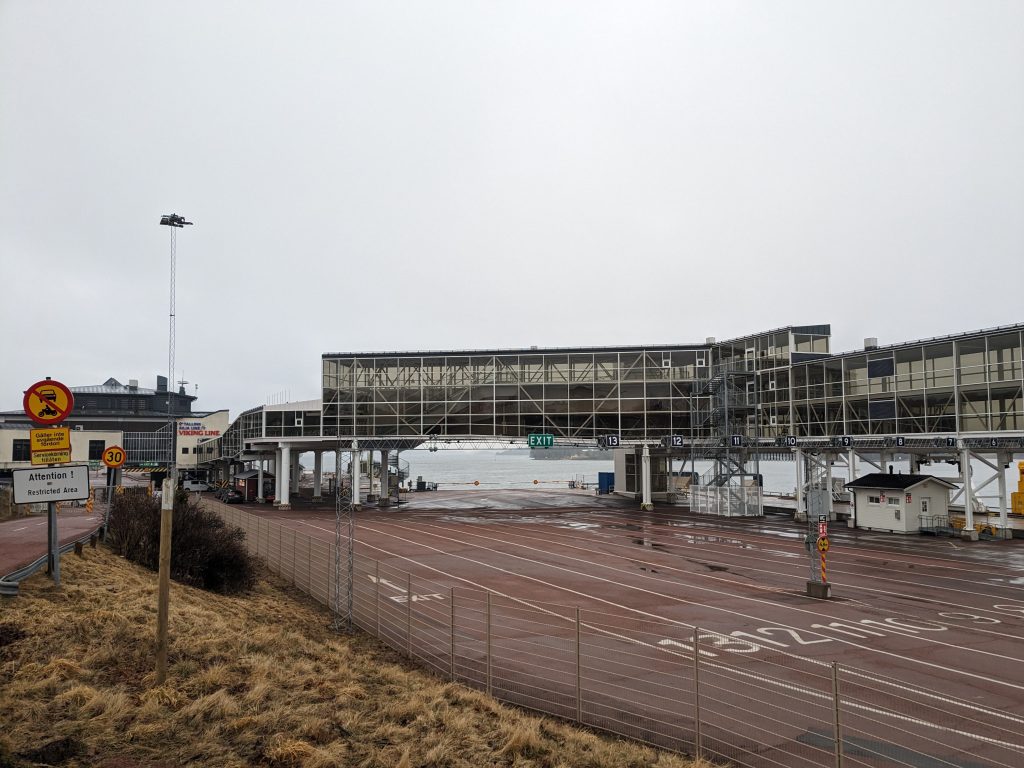
Before long, my ride to Turku arrived, the 11-year-old MS Viking Grace, which had left Stockholm earlier that day. Boarding was pretty speedy, and after a wander around the public decks, I found a spot to sit near a window on deck 10 and settled in to catch up on uni work while we departed Mariehamn. Although it was possible to book an allocated seat, or even a bunk or cabin for the short sailing, I chose not to, as I was on a bit of a budget. As I found out, empty seats in the common areas were a rare commodity, so I ended up sticking with my seat for nearly 4 hours.
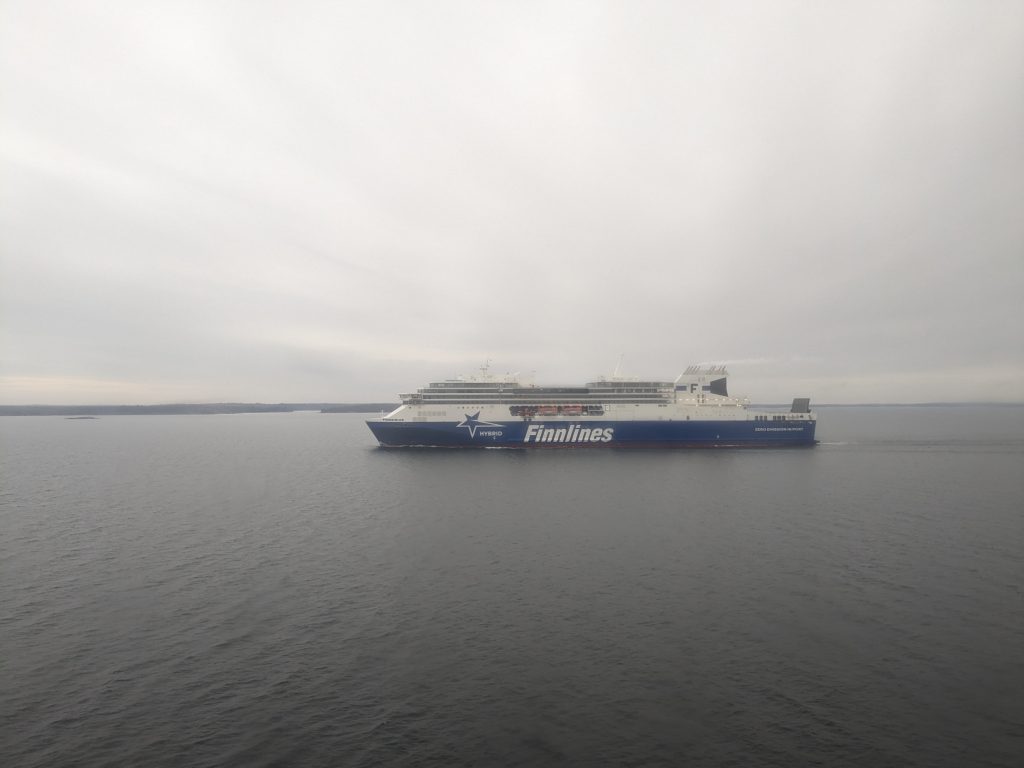
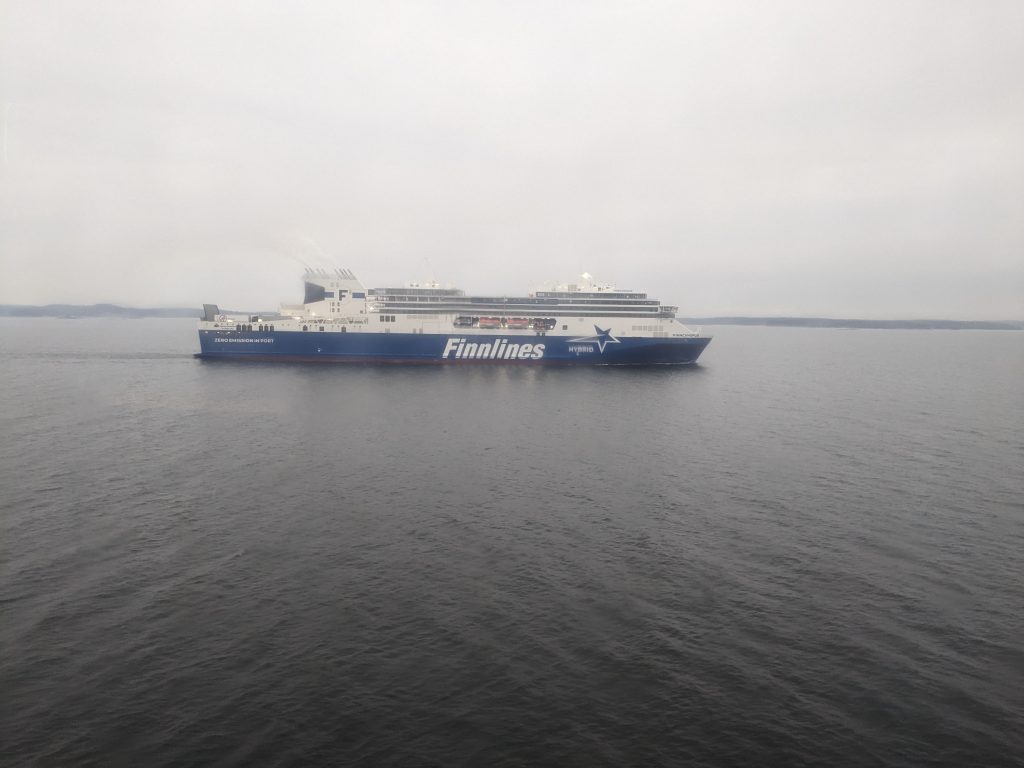
I surprisingly only saw two other ships pass us close by, both Finnlines ships on the Naantali–Långnäs–Kapellskär route, the MS Finnsirius and MS Finncanopus. As the hours wore on, despite having brought food with me, I eventually headed to one of the on-board cafes to get something to eat, where, to my horror, I discovered a simple tuna sandwich cost a whopping 11 euros (and no, it didn’t taste that good). Having lost my prime window seat, I rugged up and headed out to the topmost public deck and spent a while watching the ship gliding through the ice.
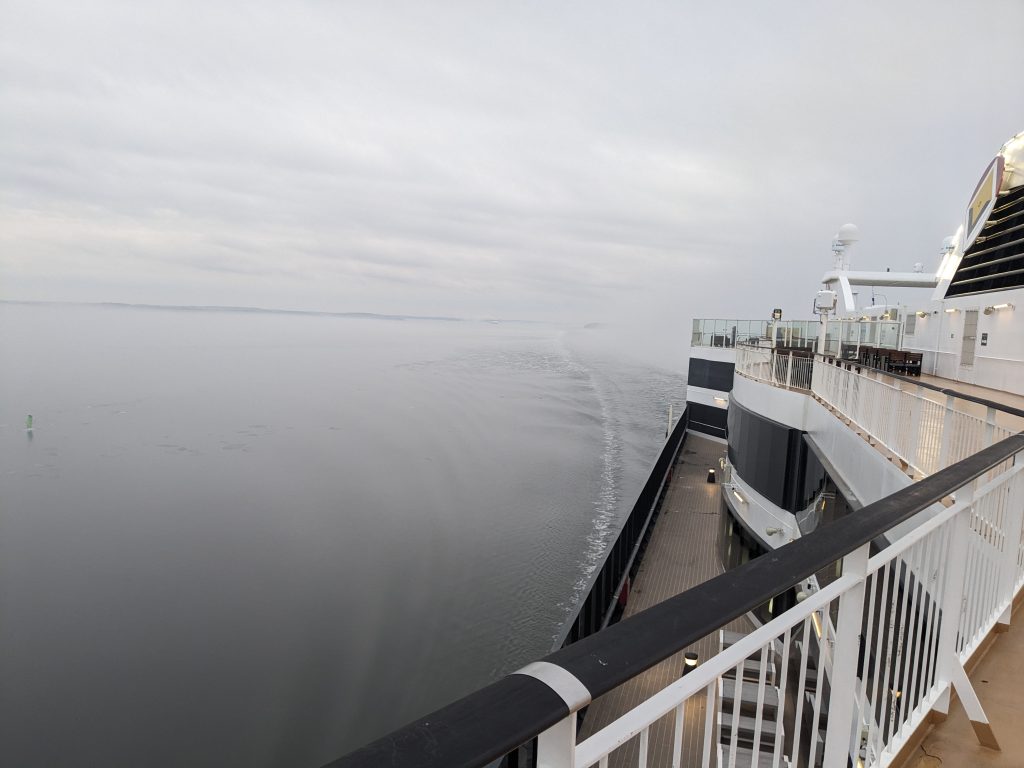
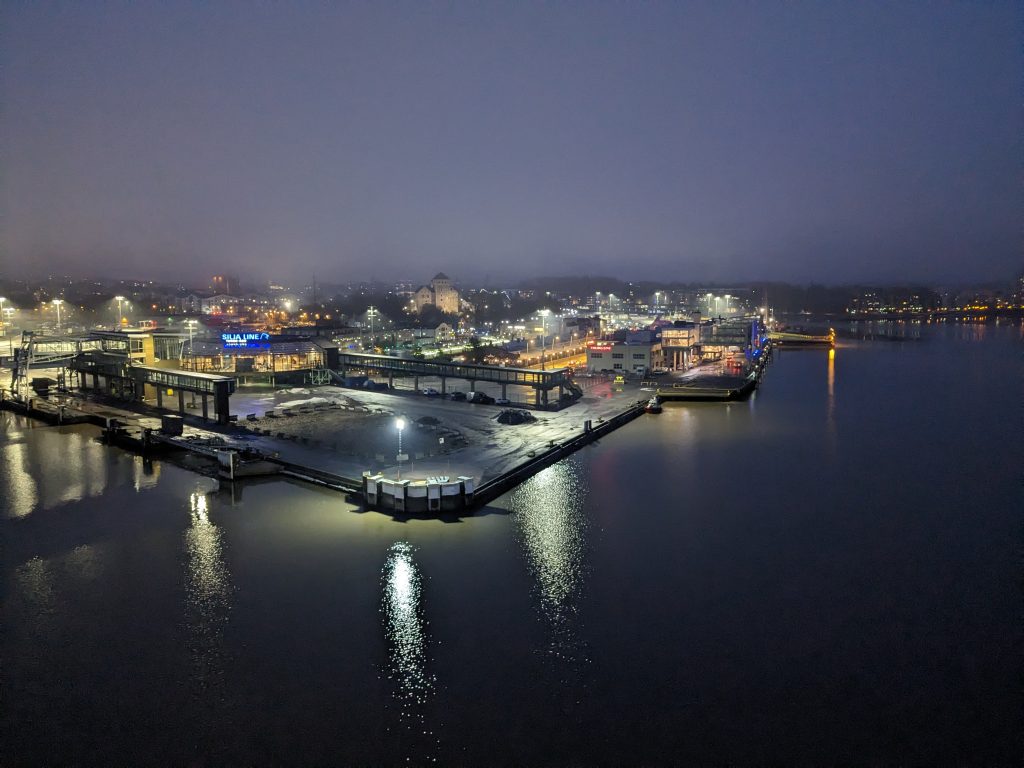
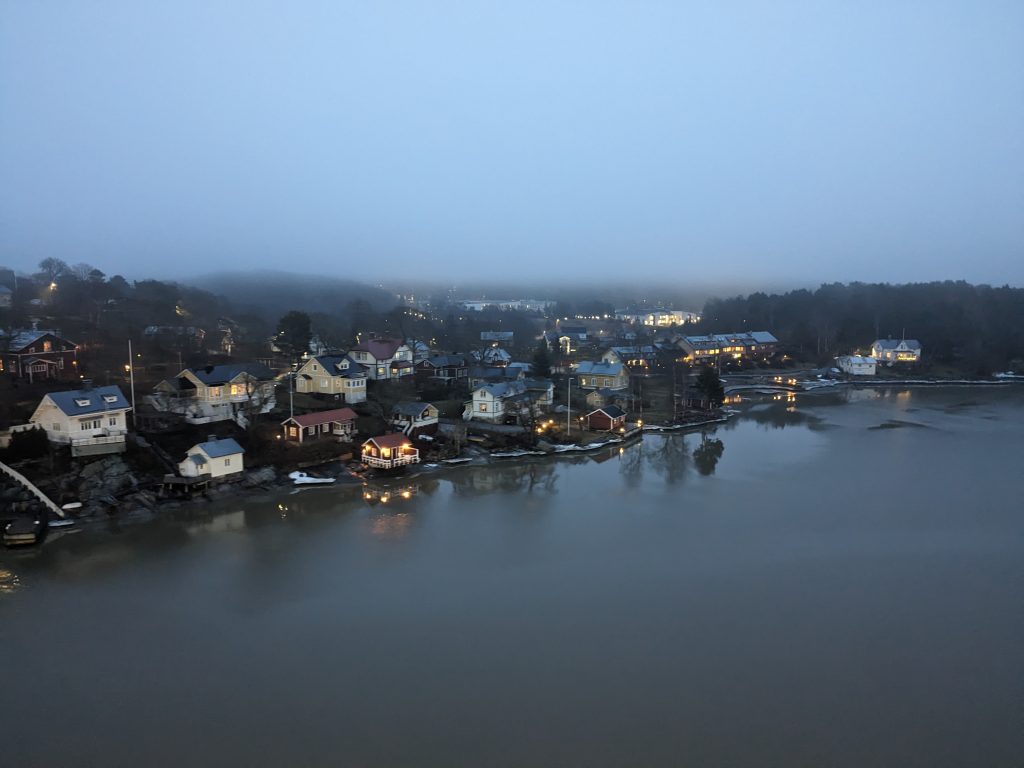
Before long, the sky began to darken, and the ship approached the Port of Turku, docking just before 8 pm. Disembarkation took a while, largely due to the Finns having to navigate their literal trolley-loads of duty-free off the ship and through the terminal, but I wasn’t too bothered, as I just had to make the 3km walk to Turku’s city centre. With the 30-minute walk behind me, I checked into my hotel for the night, the slightly tired Scandic Plaza, just off the city’s main street. Having booked on the 8:30 am train to Helsinki the next morning, it was straight to bed for me.
I started my morning with a very filling (and distinctly Finnish) complimentary breakfast, and hopped on the Föli bus (3 euro) to Kupittaa station. Normally, VR (Finnish State Railways) services to Turku run to and from the city’s central station, however, services were being truncated at Kupittaa during my visit due to construction on the line to Turku Central. Arriving with thirty seconds to spare, I ran up the platform and boarded my train to Helsinki, made up of double deck Intercity coaches, and hauled by a class Sr2 locomotive.
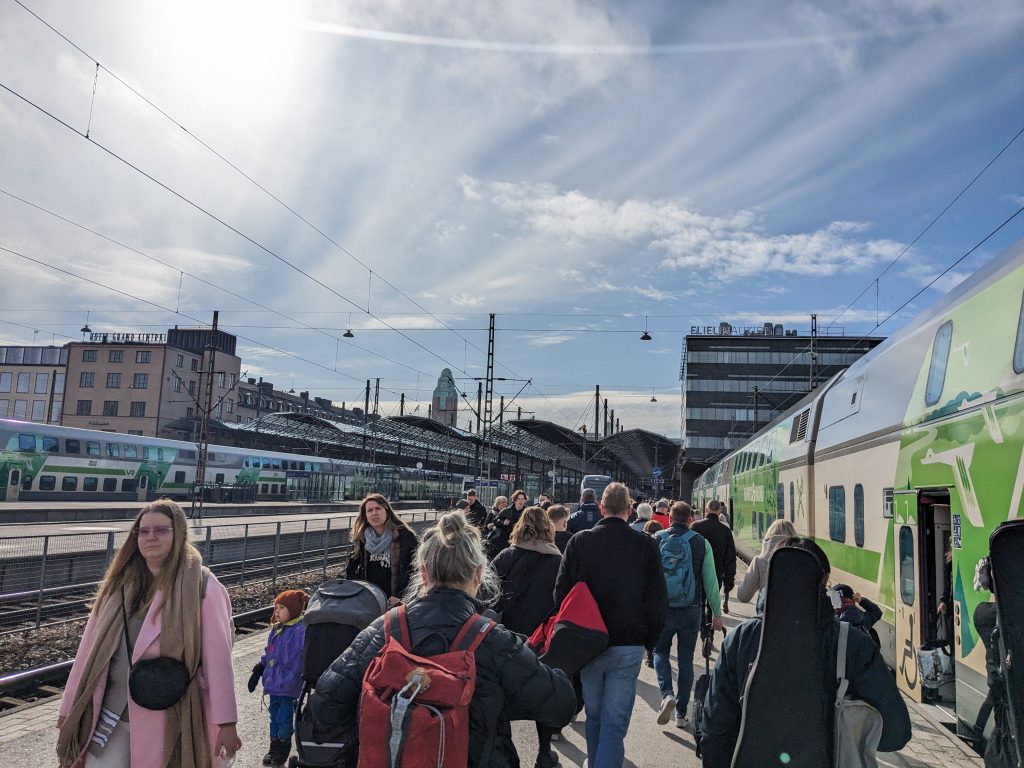
After just under two hours of speeding through the snowy Finnish countryside, my train pulled into Helsinki’s gorgeous central station under bright blue skies. Having checked into my hotel, slightly out of the city centre, I headed back to the station to pick up an HSL public transport card, to pay for trams and trains around the city. Walking down past the city’s iconic cathedral to the touristy South Harbour, I then took the short ferry ride to the historic island fort of Suomenlinna.
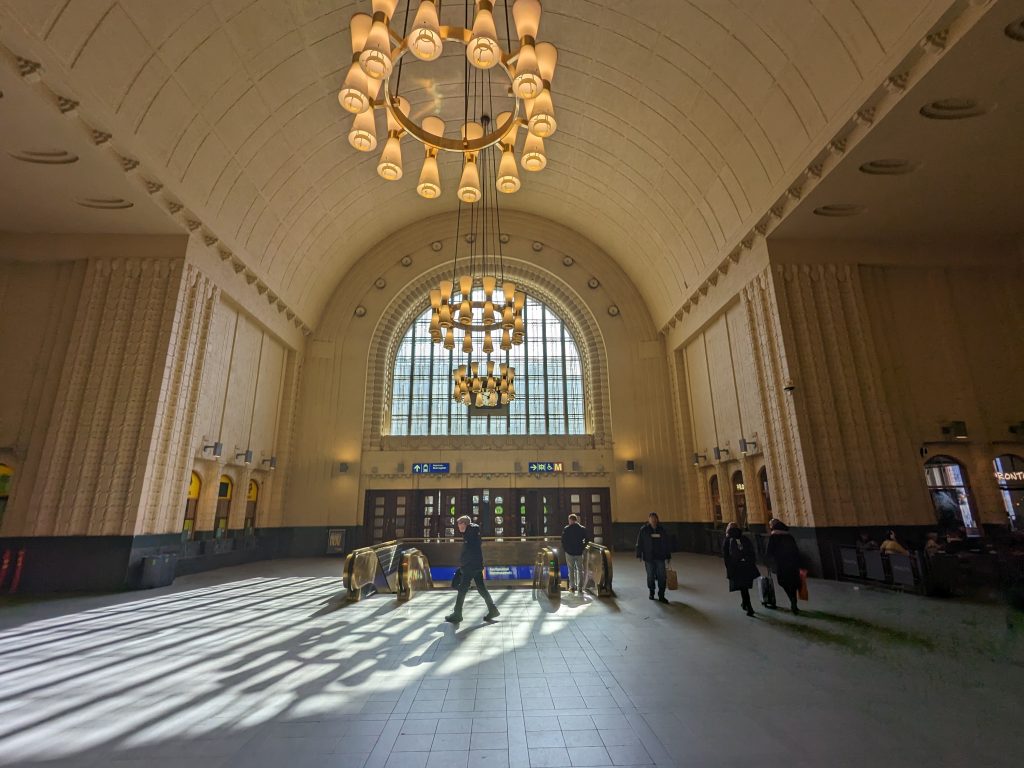
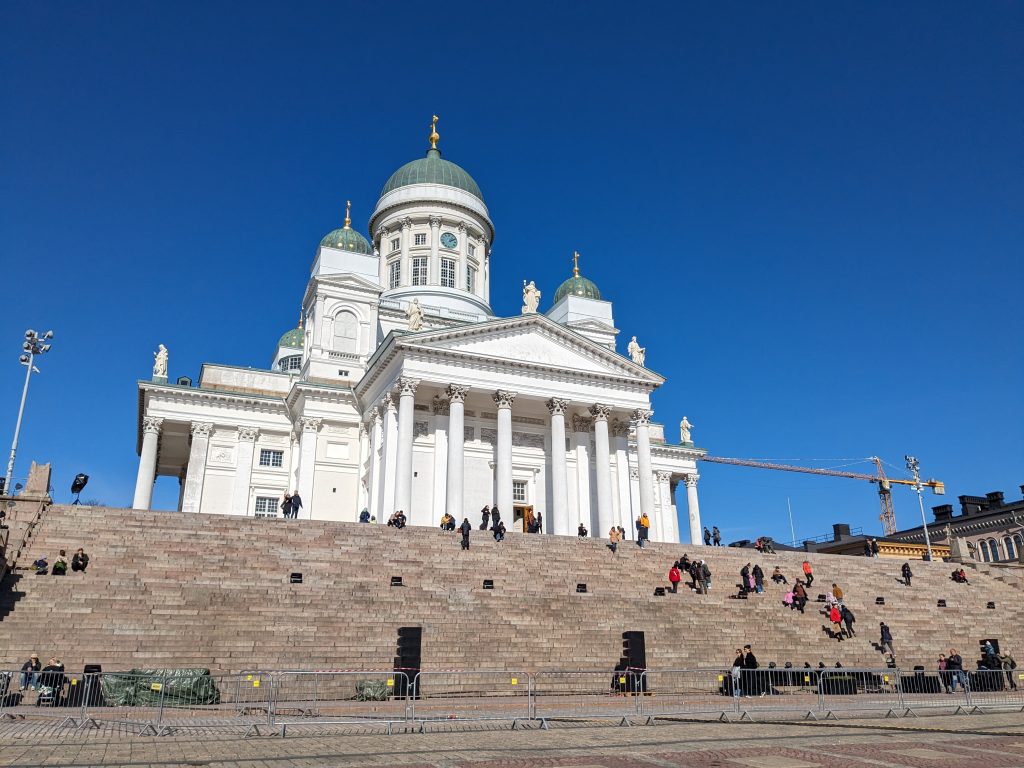
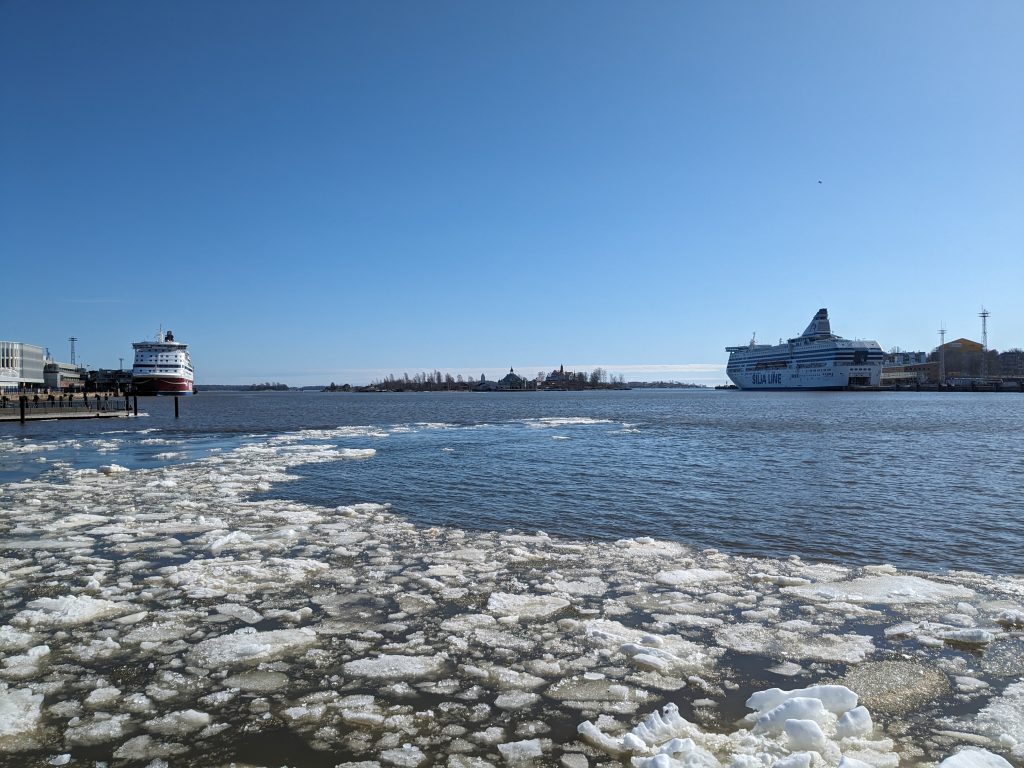
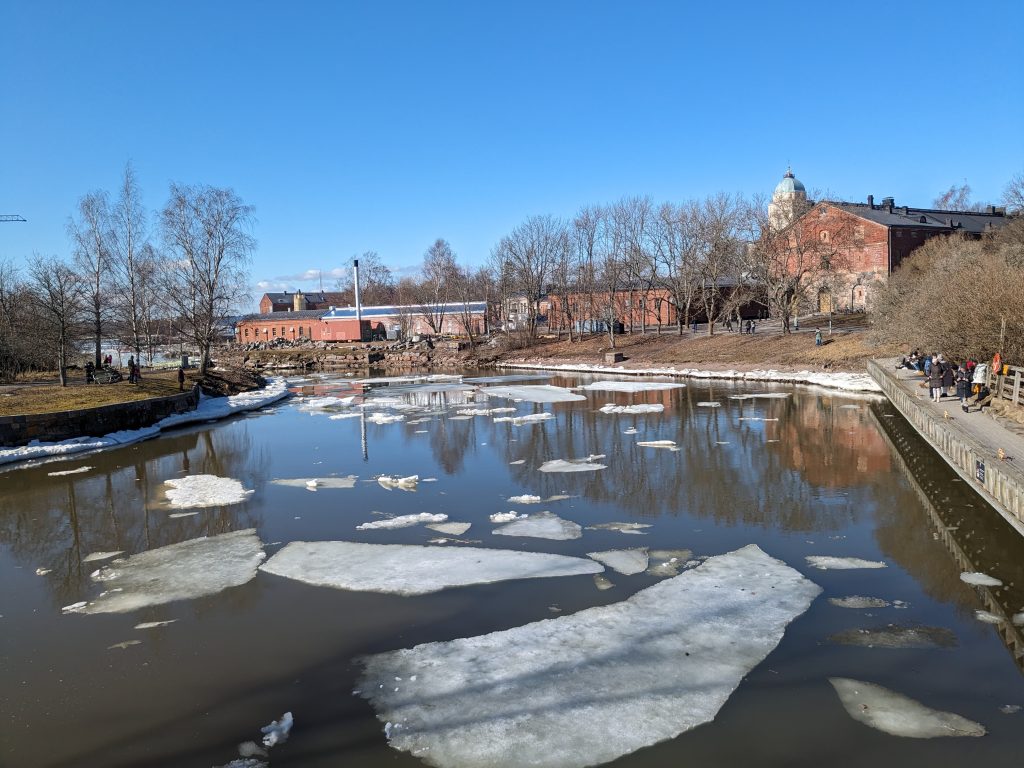
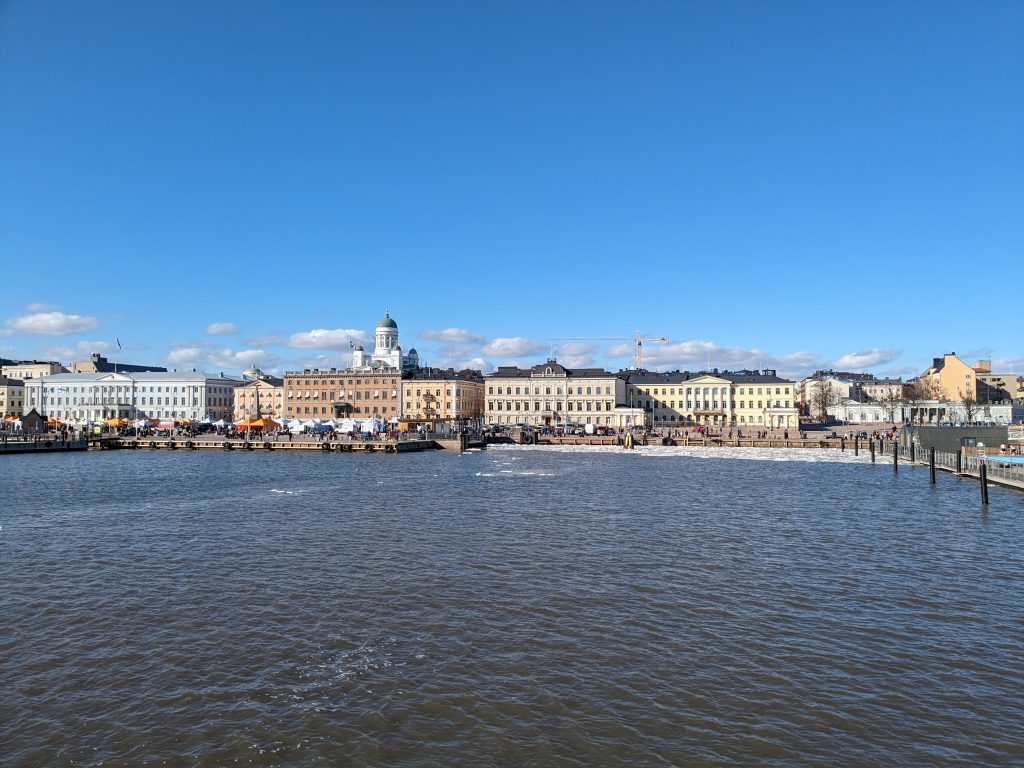
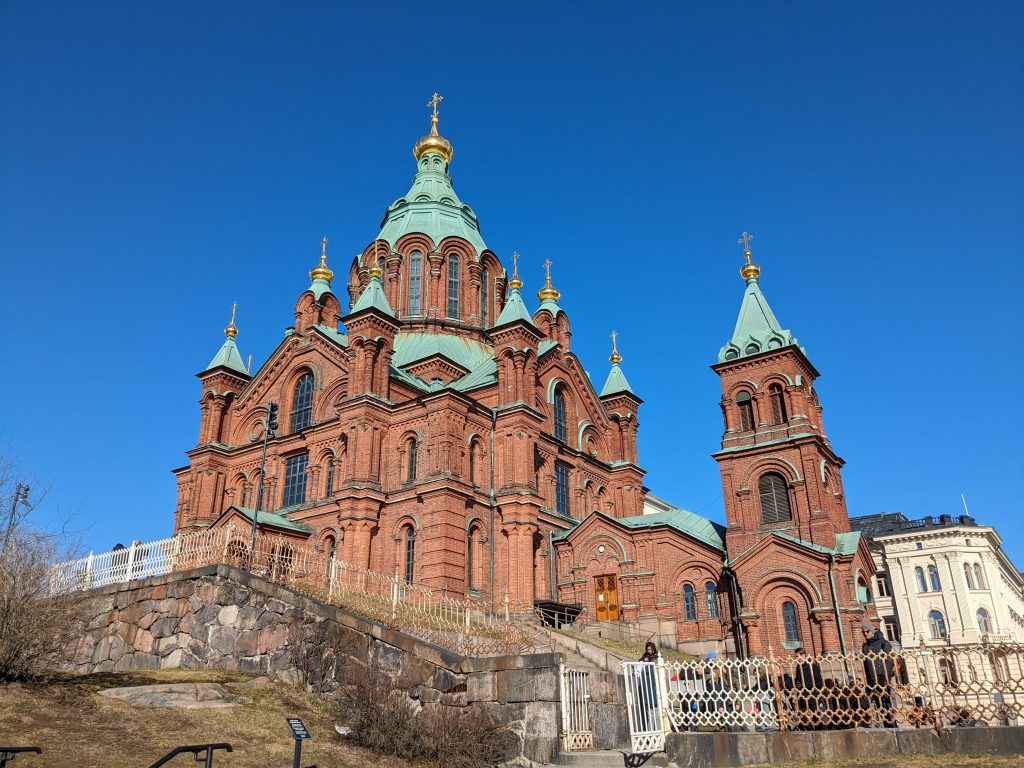
A UNESCO World Heritage site since 1991, the picturesque island southeast of the city was pretty busy with tourists and locals taking full advantage of the sunny weather. I spent a few hours walking around the island and grabbed a cheap supermarket lunch before heading back to the city proper, and finished my afternoon off wandering around some of the city’s sights.
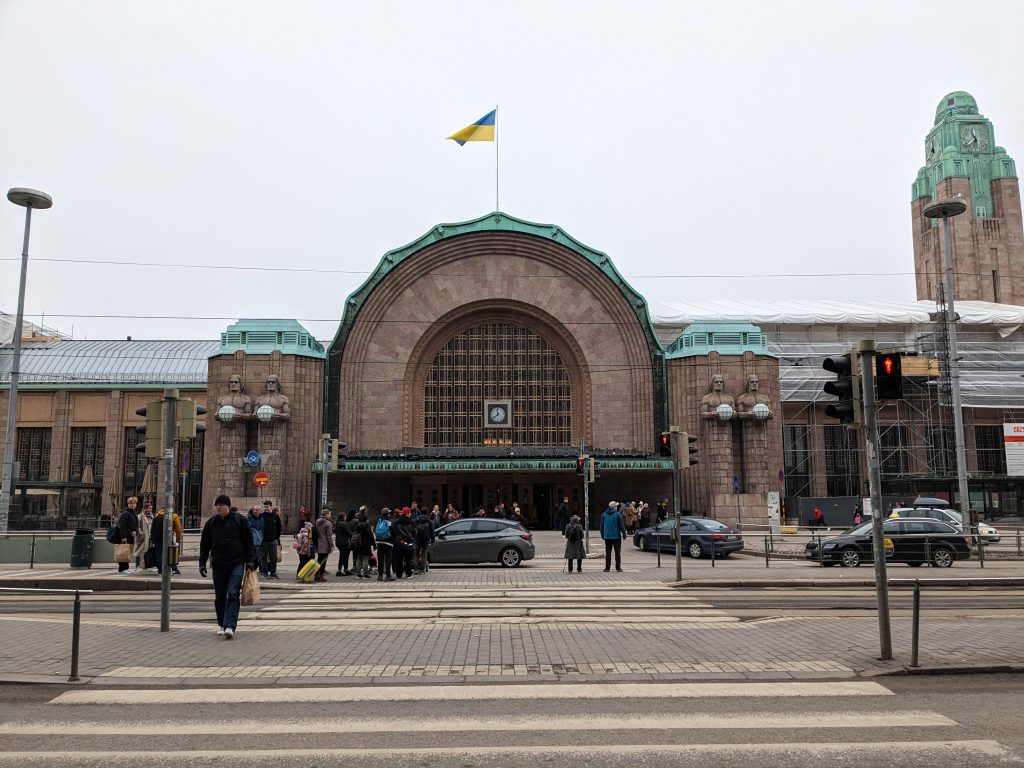
After a leisurely morning, I checked out of my hotel and took the airport line out towards Aviapolis station, a short walk away from the Suomen ilmailumuseo, or Finnish Aviation Museum. Jammed full of historic aircraft, from the tiniest gliders and Cessnas, to complete Convair 440s and Douglas DC-3s, it’s an absolute must-visit for anyone with even a passing interest in aviation.
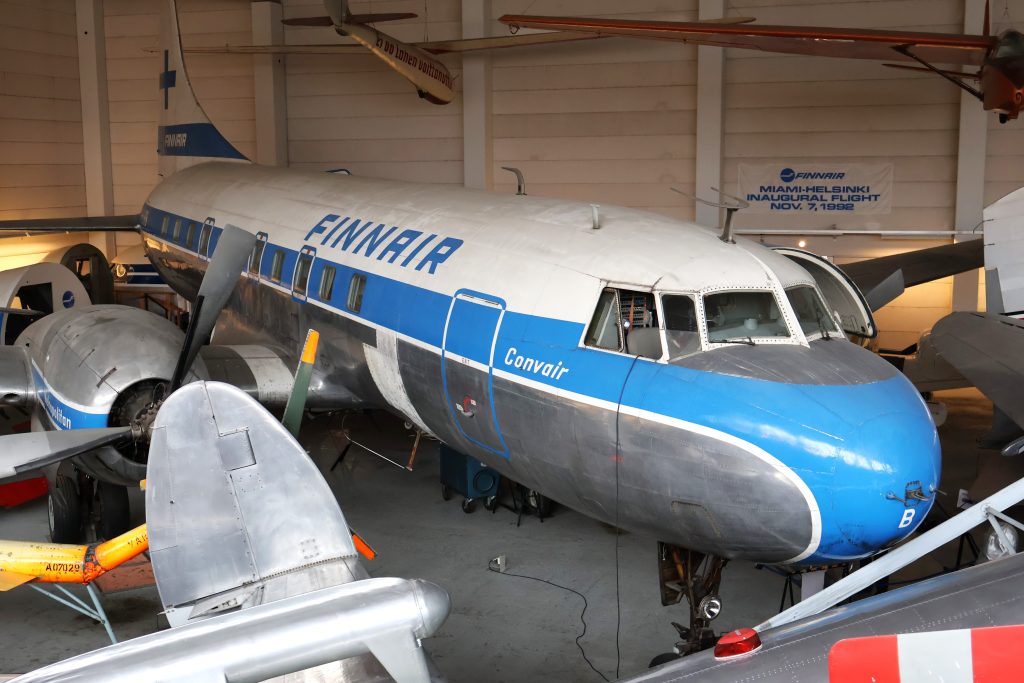

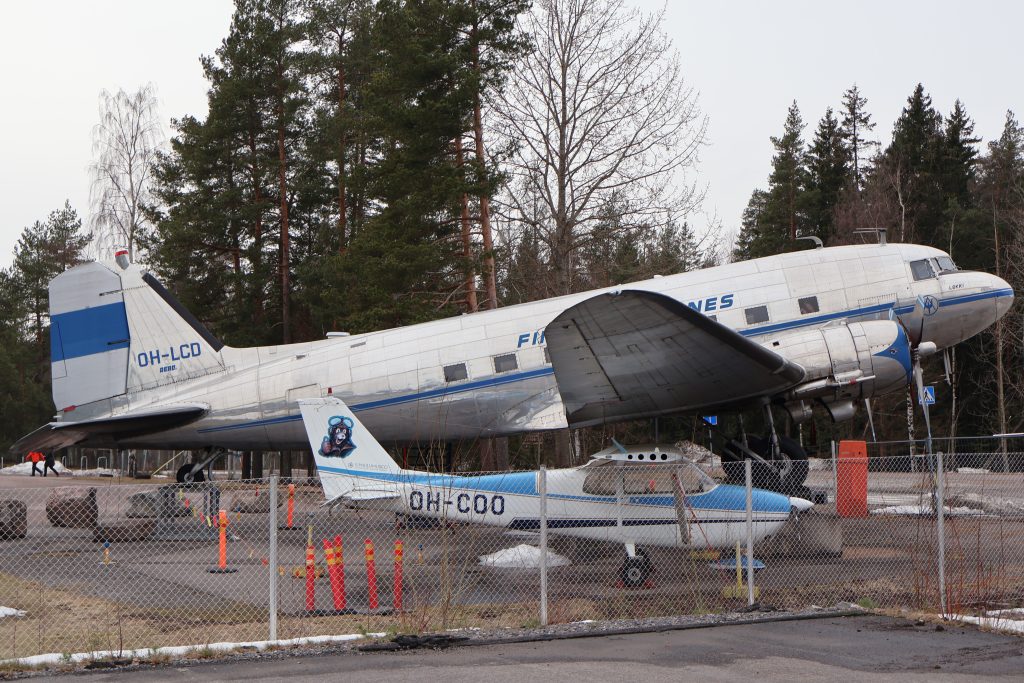
| Flight Details | |
|---|---|
| Airline | Norwegian Air Sweden |
| Aircraft Type | Boeing 737-8 |
| Registration | SE-RTL |
| Route | Helsinki Vantaa to London Gatwick |
| Flight Number | D82770 |
| Date | 31/03/2024 |
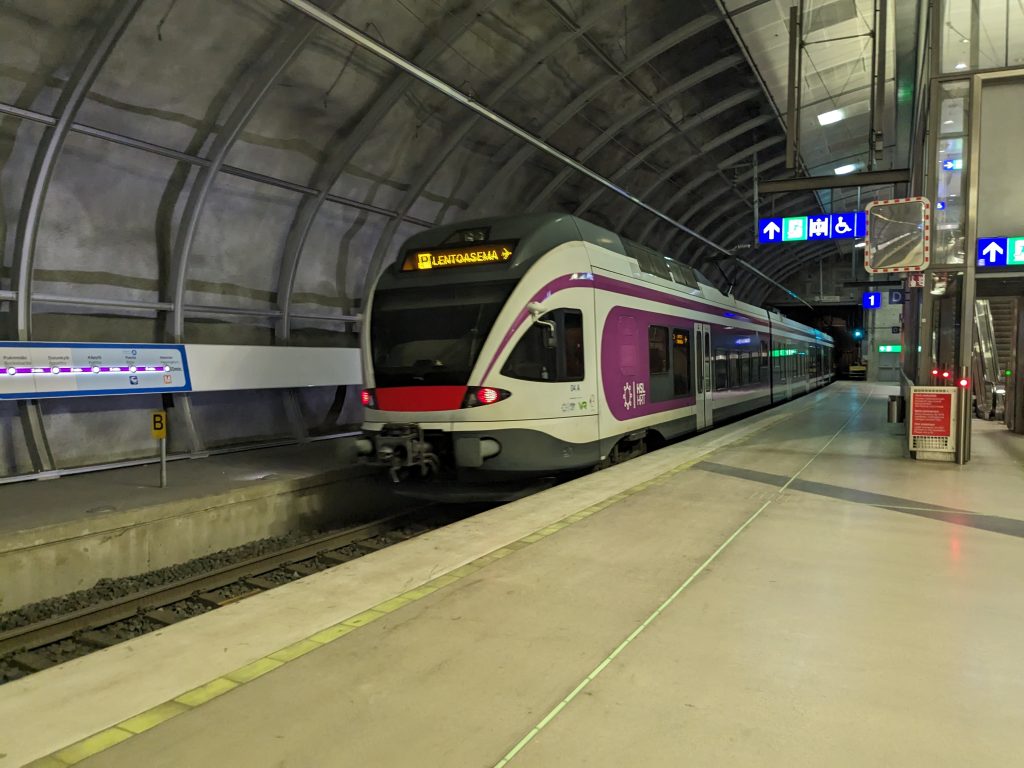
Aware I wanted to squeeze in some plane spotting too, I made my way back to the train station, and went one more stop to Helsinki-Vantaa, the city’s main airport. After checking in for my flight back to Gatwick at a self-serve kiosk, I headed out the the top of the carpark, as the ‘scenic terrace’ was still closed for winter.
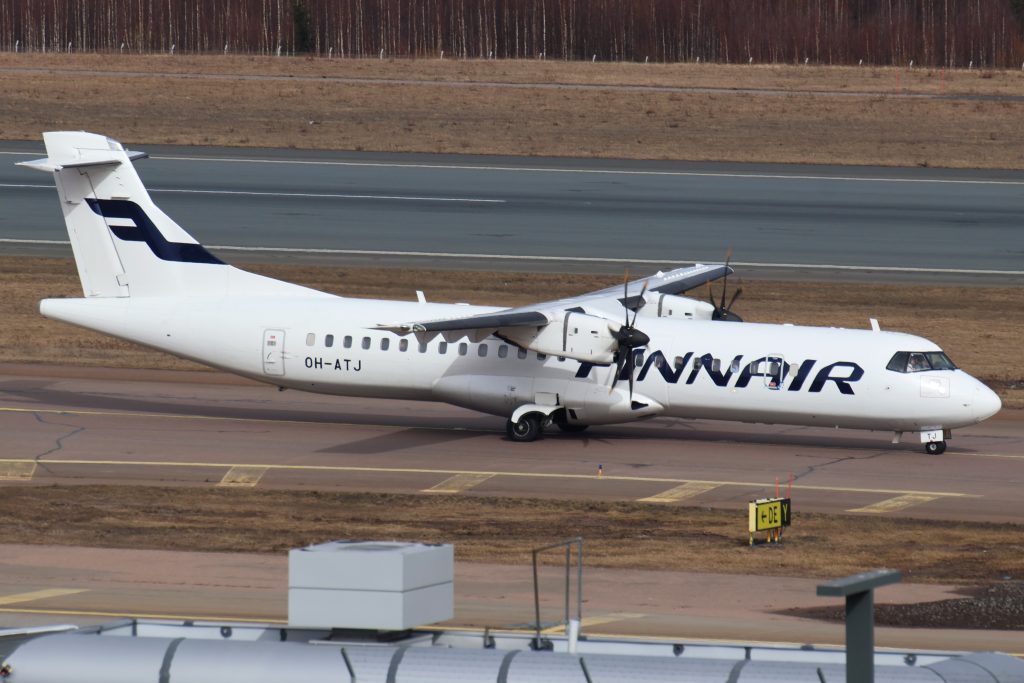


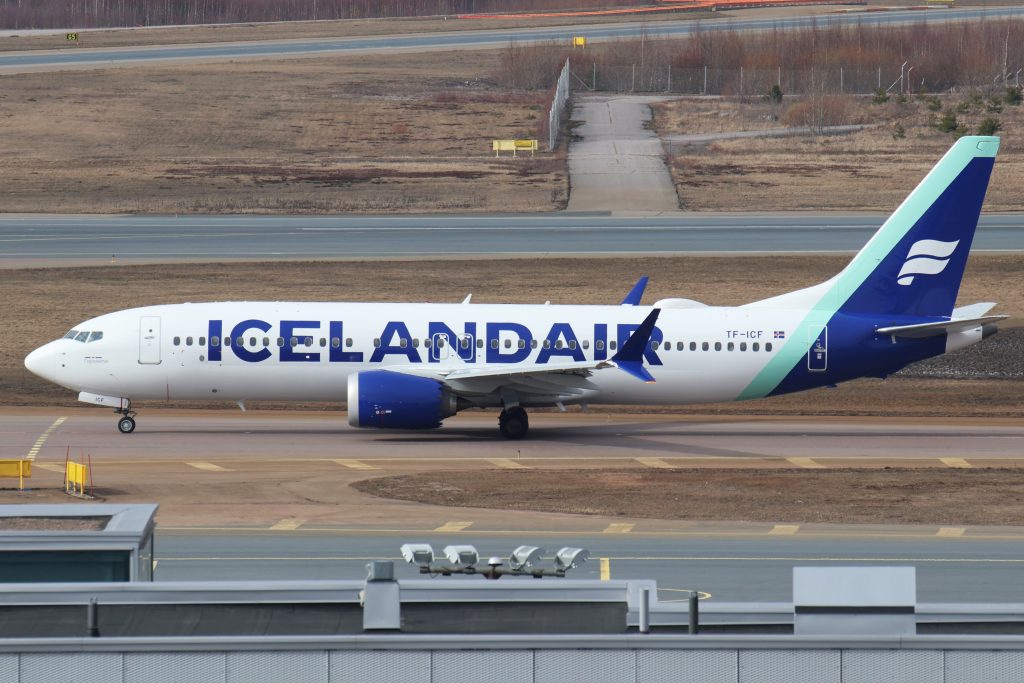
While it’s not the most exciting airport to spot at, Finnair do have quite a varied fleet, and a few interesting liveries as well. A few hours of spotting completed, I made my way back into the terminal, through security and passport control, and to my bus gate to await departure.
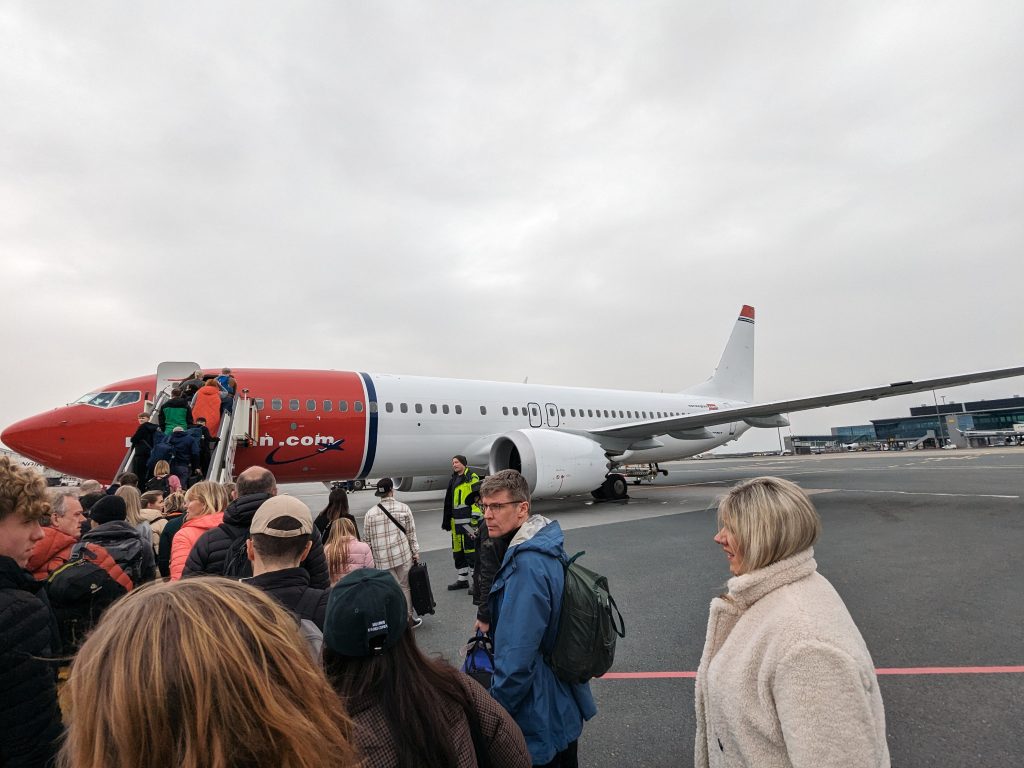
After a few delays, I was finally bussed out to the aircraft, a 5-month-old Boeing 737-8, which, being my first 737 MAX, I was pretty keen for. Boarding was very sluggish, but I found my row 14 seat had an excellent wing view, and with an empty middle seat and pretty good legroom, I was set for the three-hour flight back across Europe. Having pushed back five minutes behind schedule at 5:40 pm, it was a short taxi to the runway and we were flying westbound.
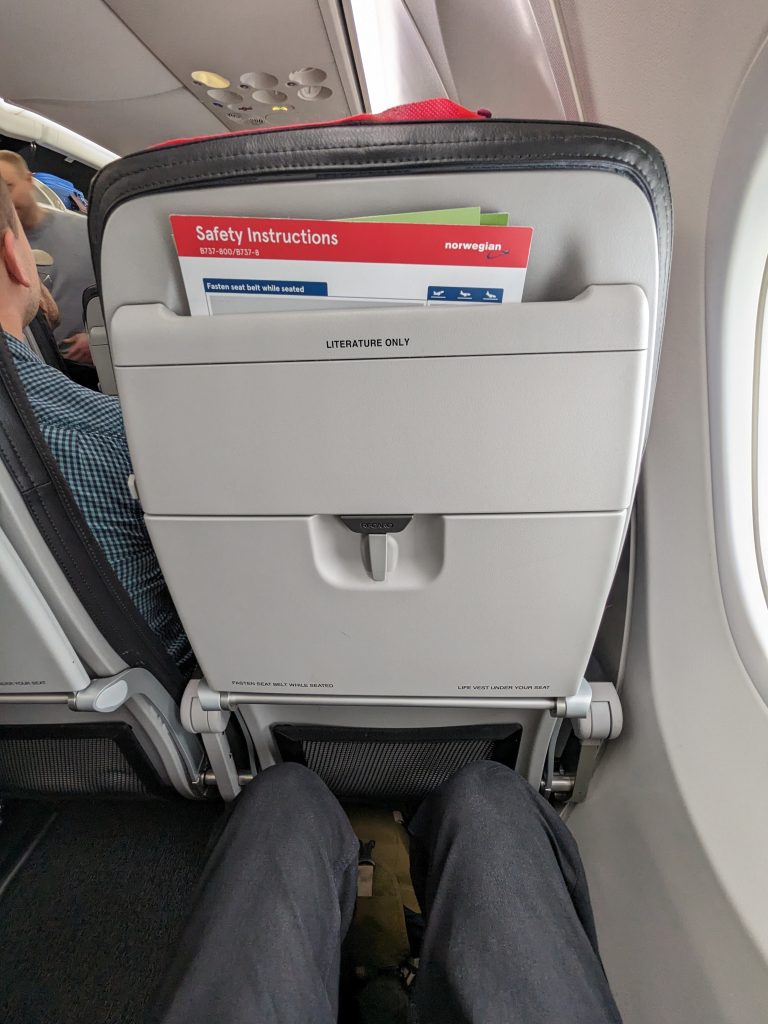
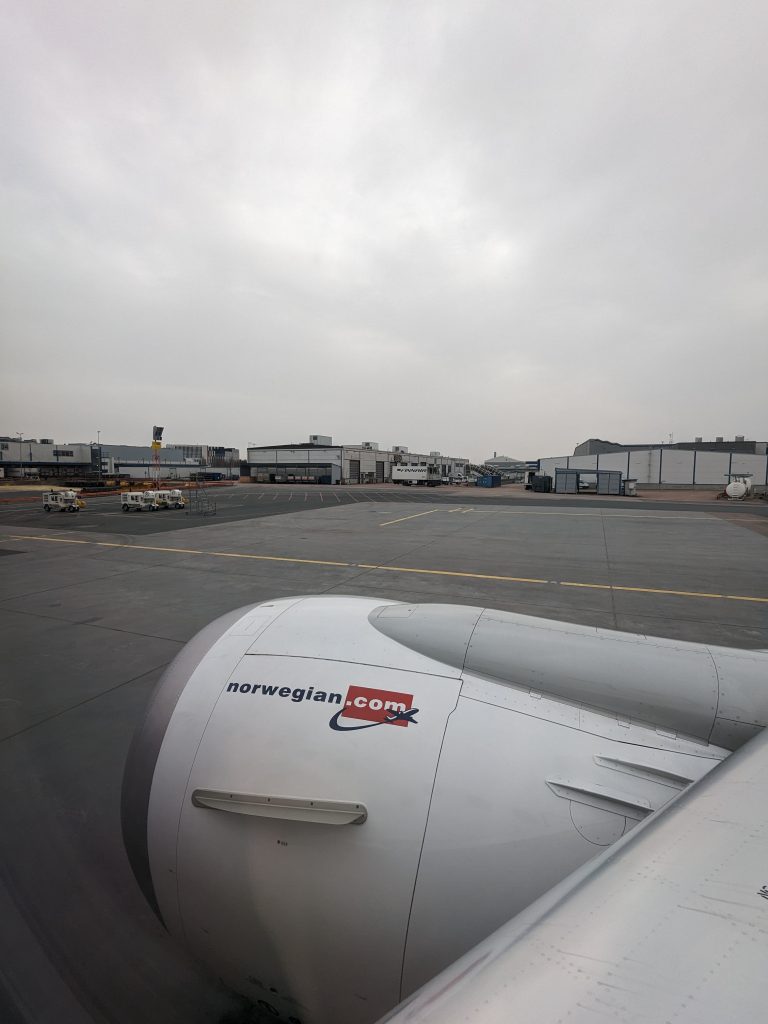
Norwegian are a pretty standard low-cost affair, with a buy-on-board menu and unbundled extras, but the nicer seats and fantastic crew made the experience feel not too far off what would be expected from a full-service carrier in Europe.
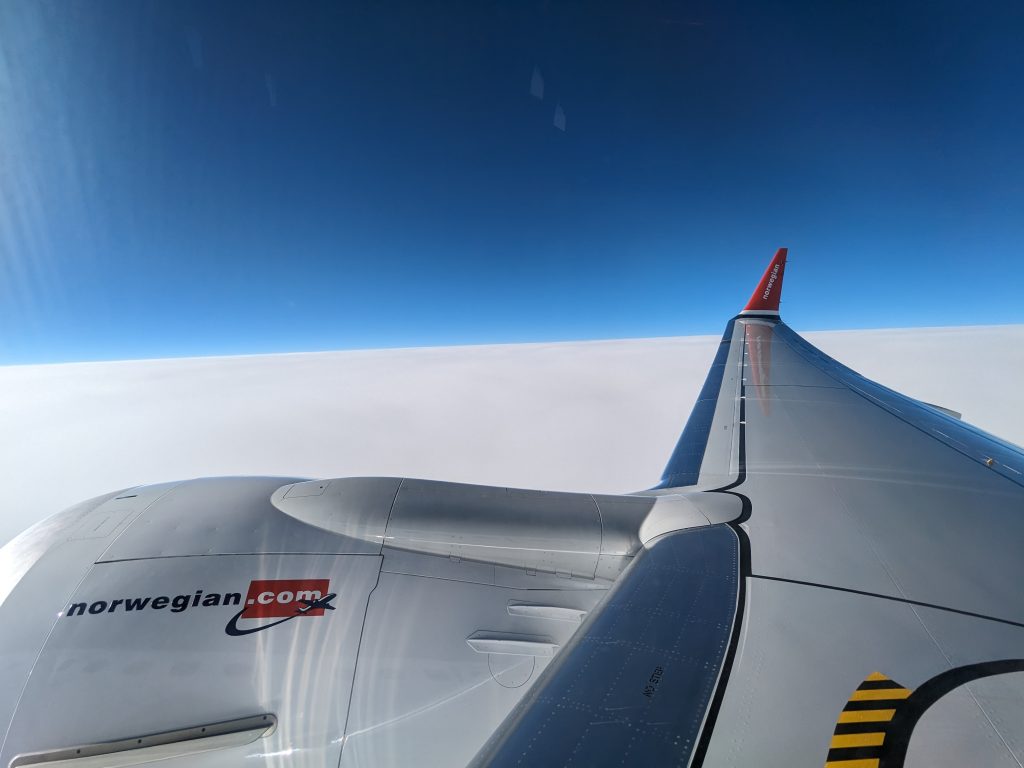
With the two-hour time difference, my flight landed at London Gatwick just after 6:30 pm, and I was heading through the e-gates at passport control just ten minutes later. Having travelled with just my backpack, I bypassed the carousels and was on a train back down to Brighton just before 7 pm.
After the retirement of Alliance Airlines’ Fokker 50s a few years ago I had concluded I’d never get the chance to fly on the last Dutch turboprop, so getting the opportunity to was fantastic, and it was such an enjoyable (if expensive!) trip! I hope this has been an enjoyable read, and I’ve got upwards of a dozen more unfinished trip reports in my drafts, make sure to follow my Instagram so you don’t miss out when they’re published!
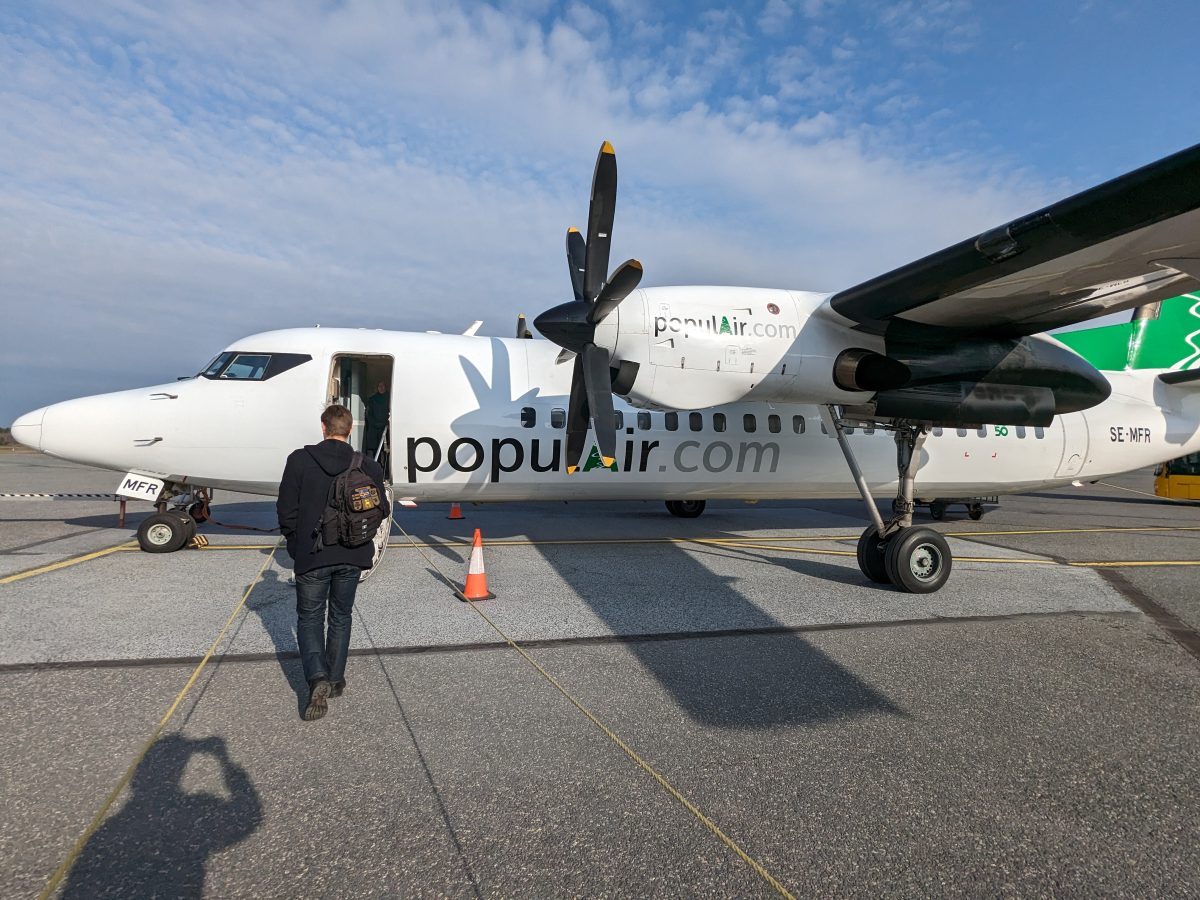
One reply on “Stockholm to Mariehamn on Amapola Flyg/PopulAir’s Fokker 50”
Although I’m not particularly interested in aircraft I found this a very interesting, informative read. What an amazing trip you had!